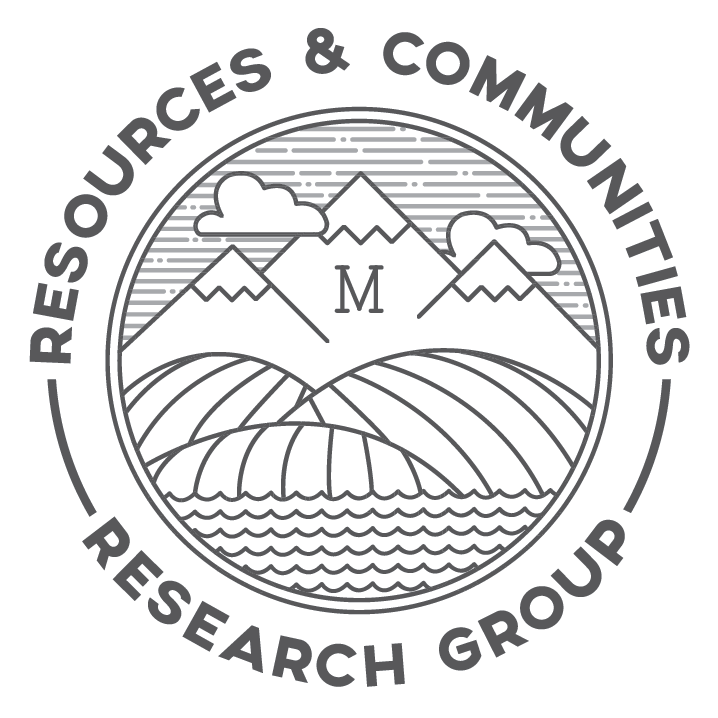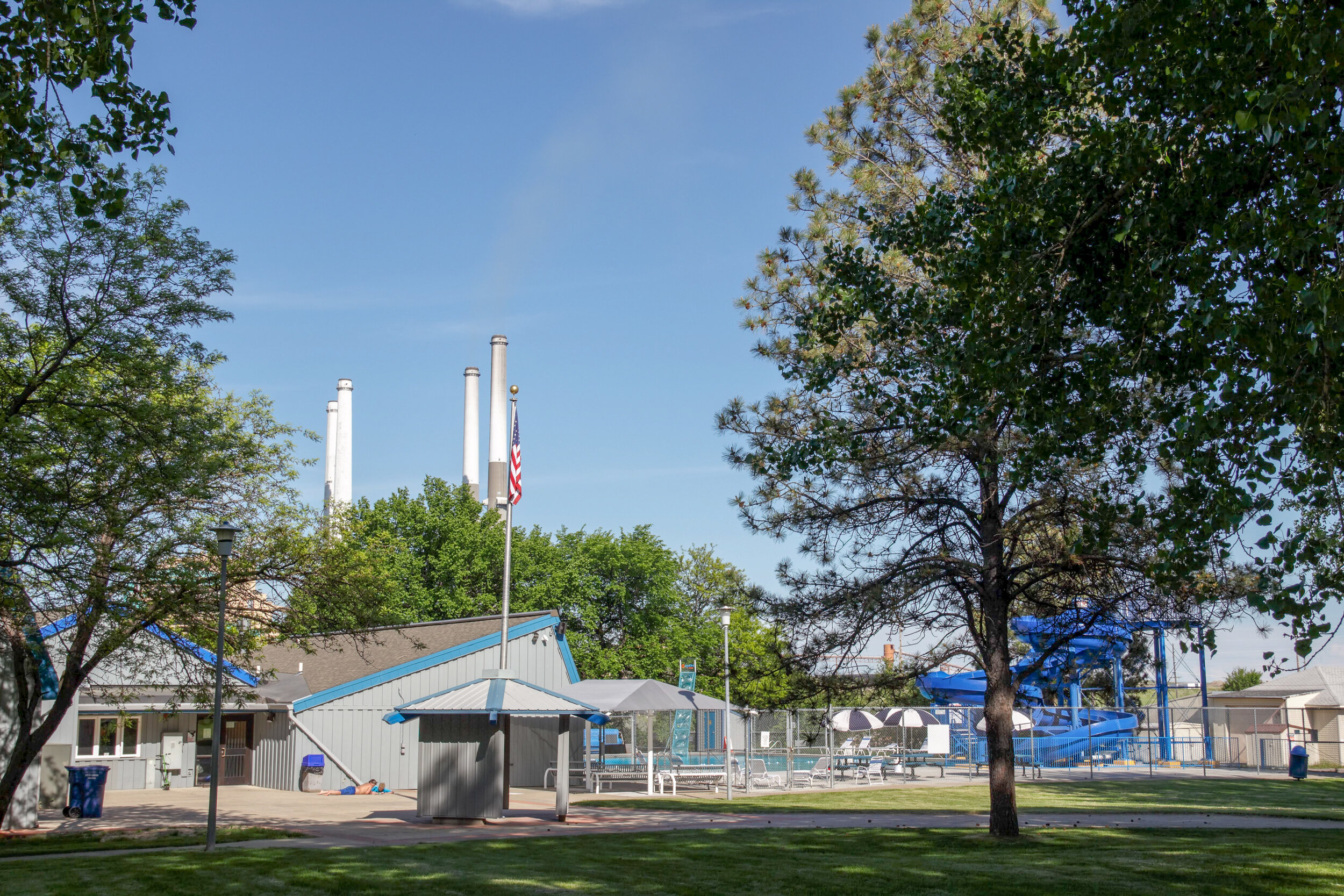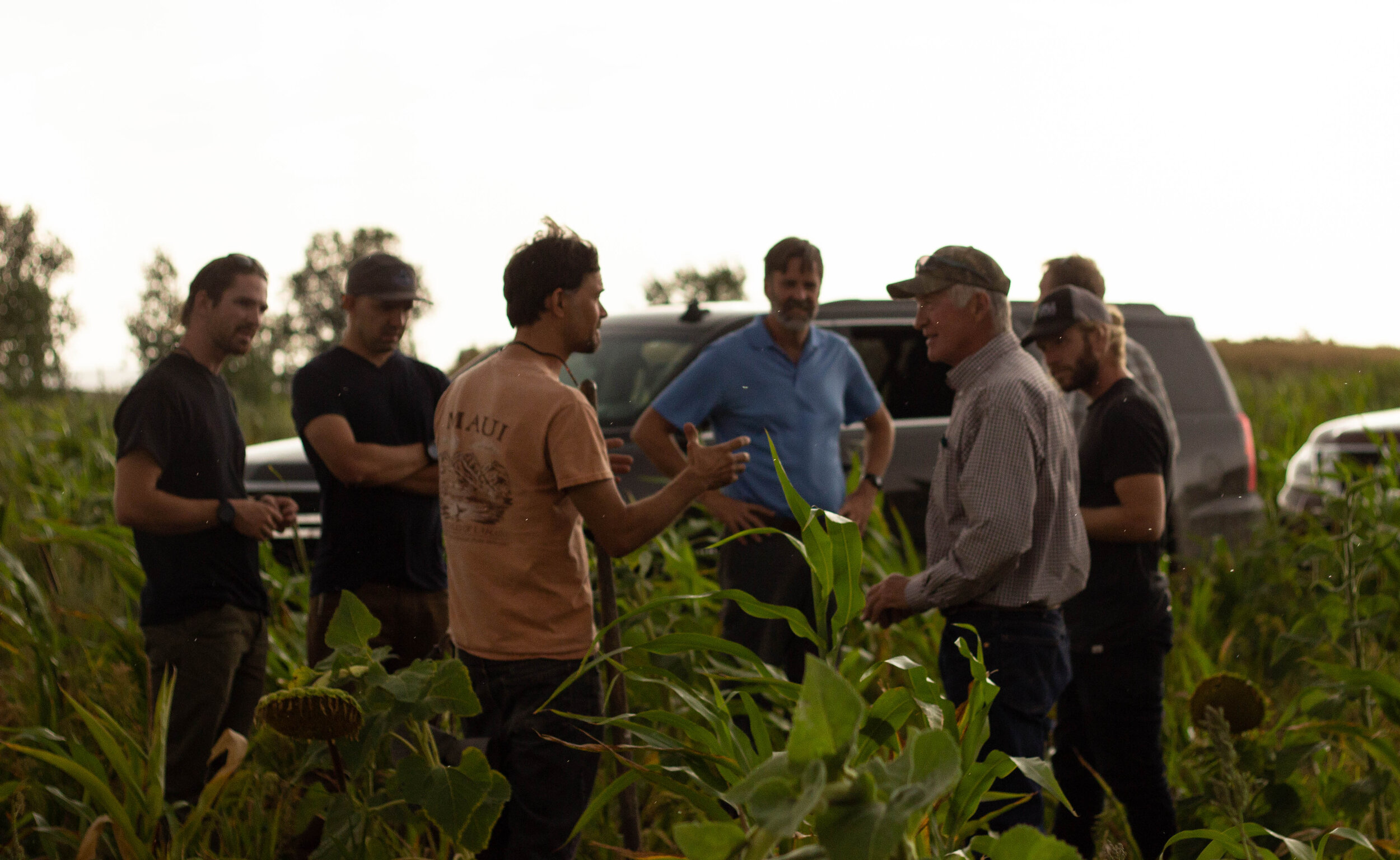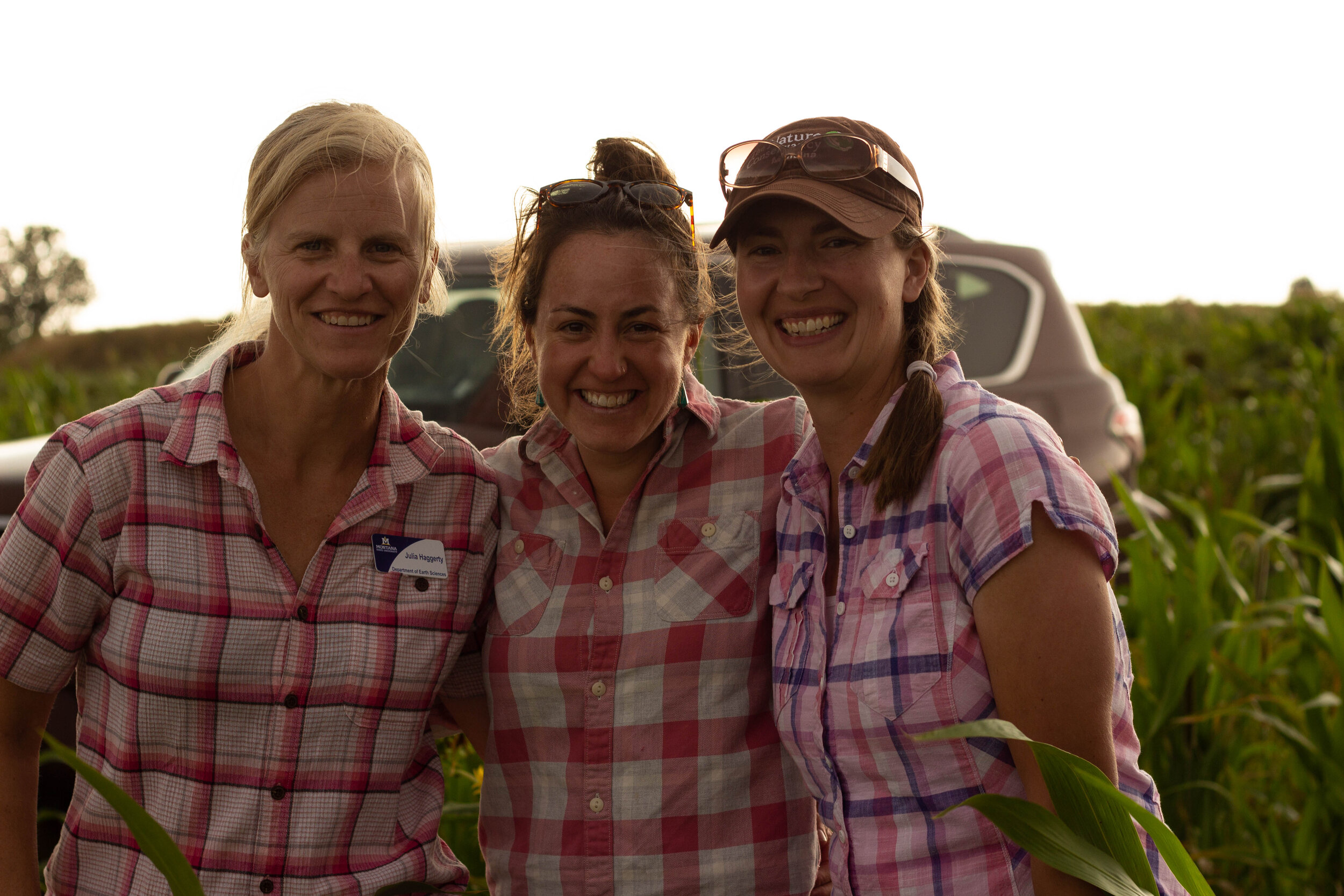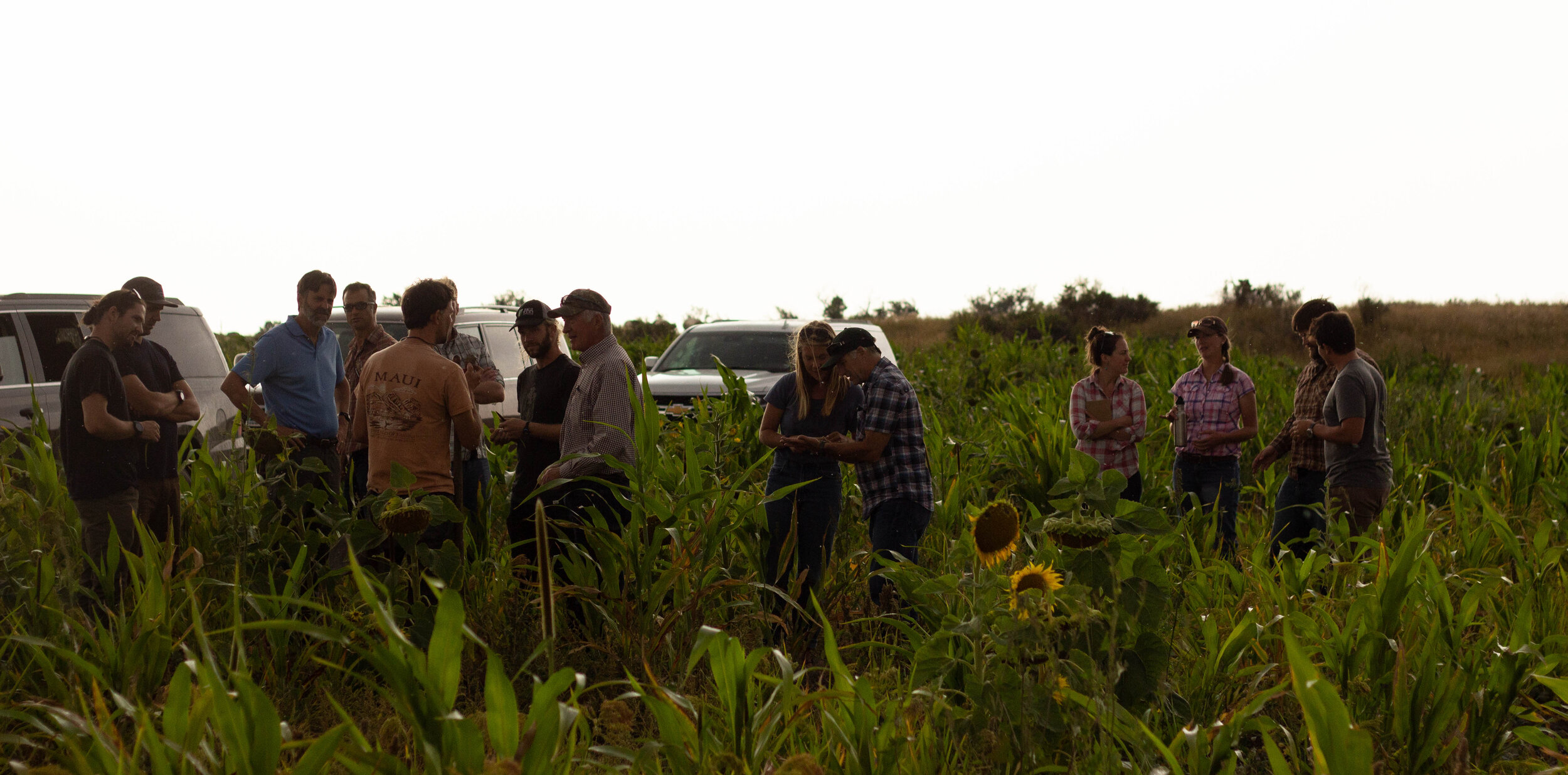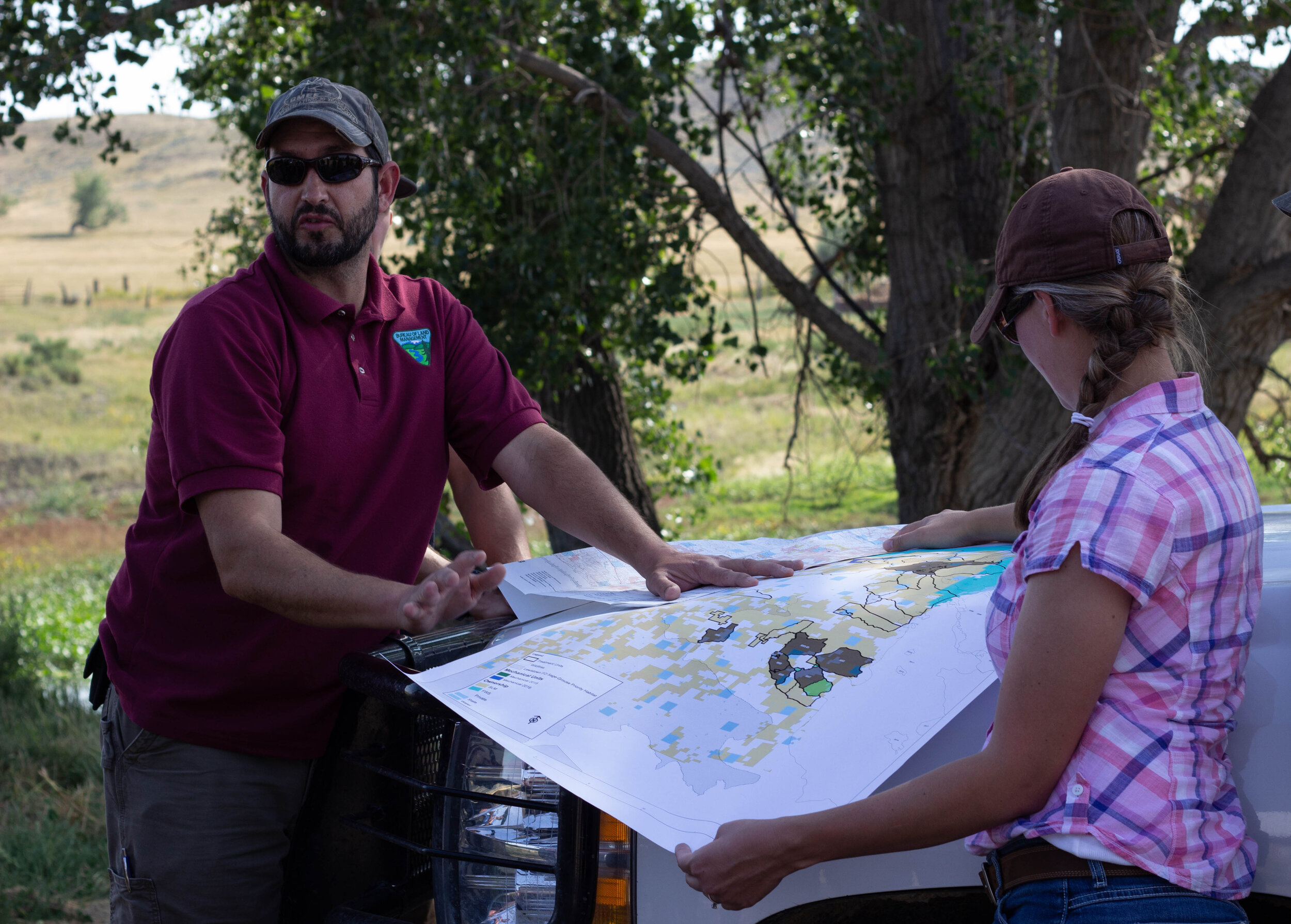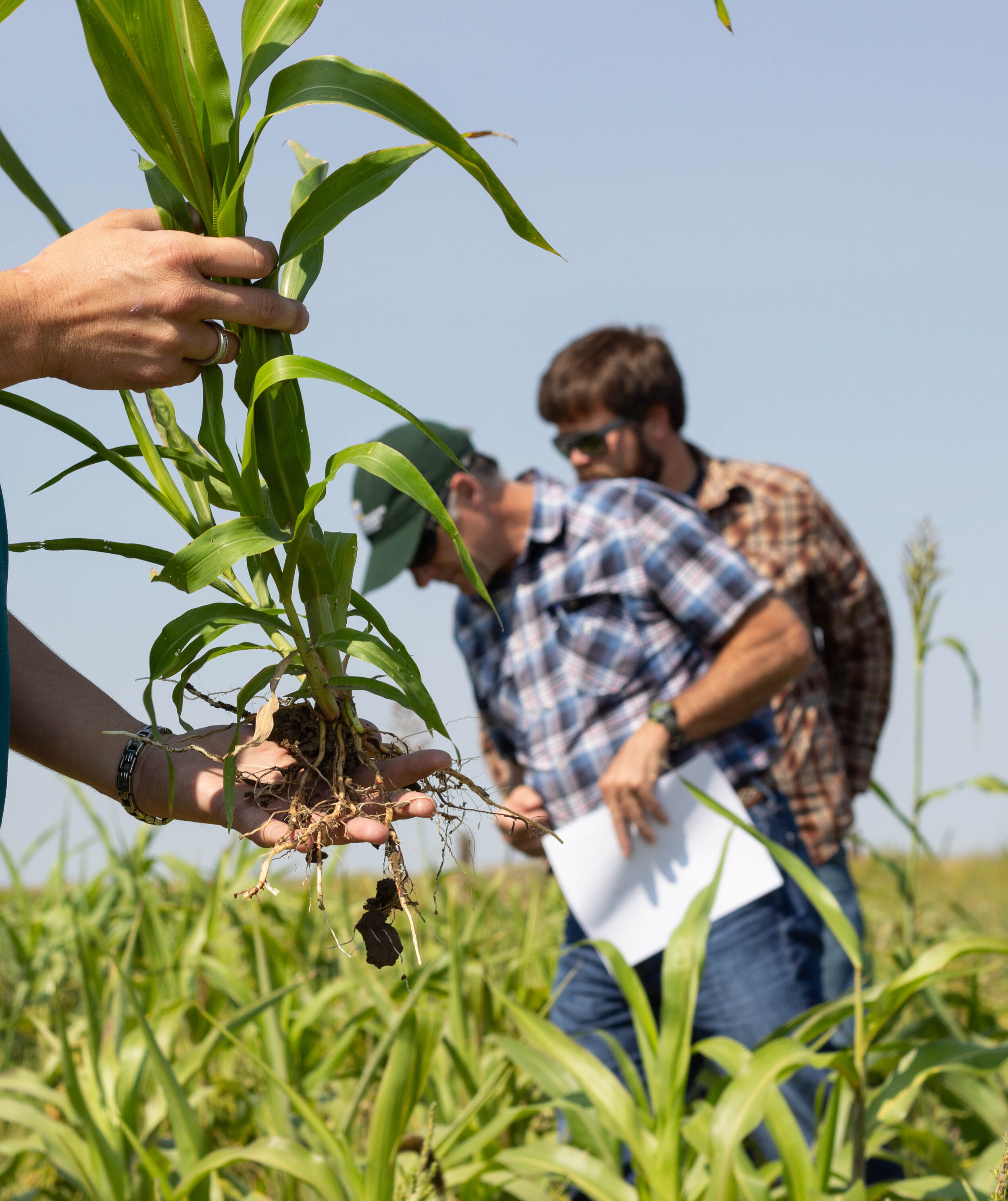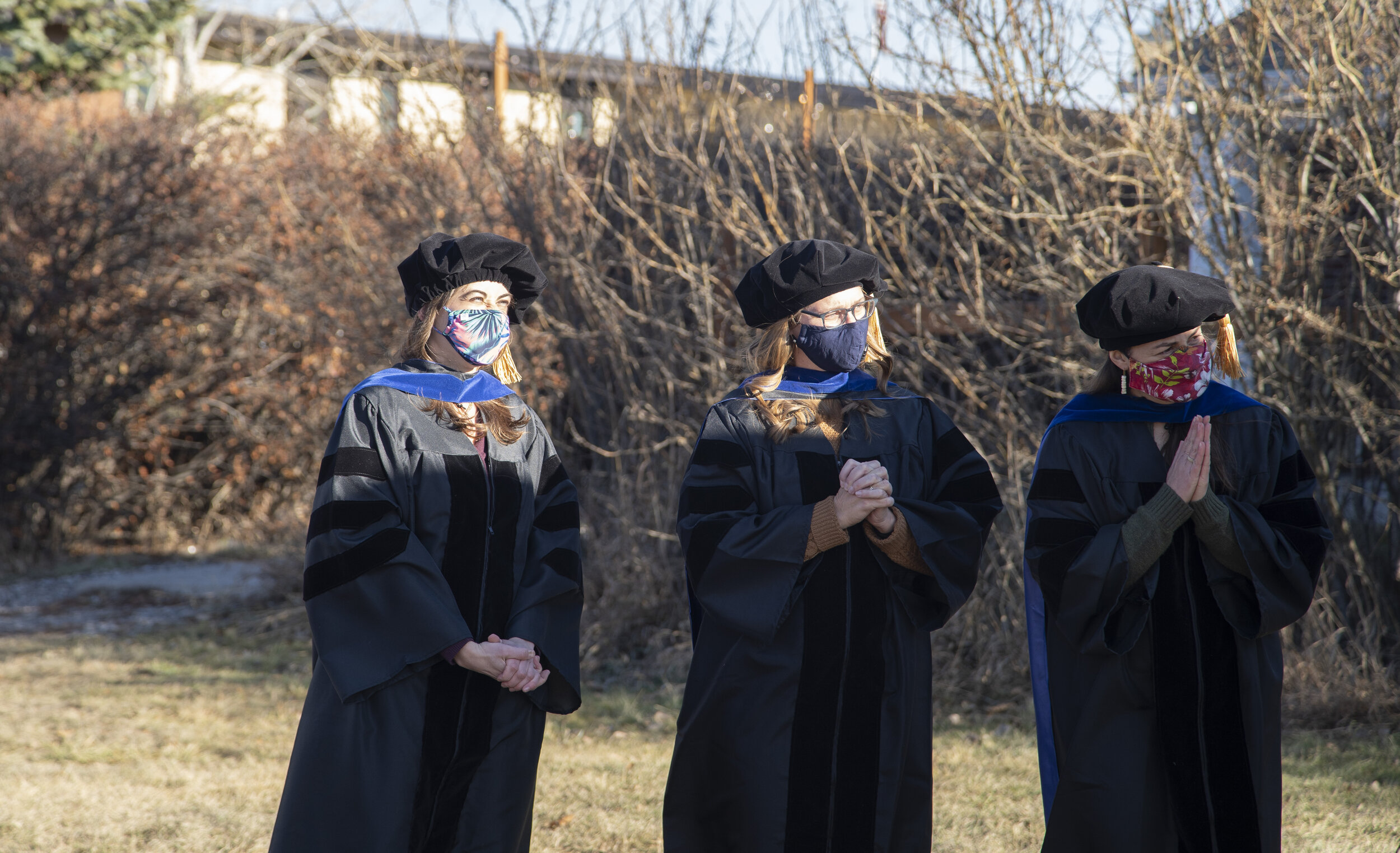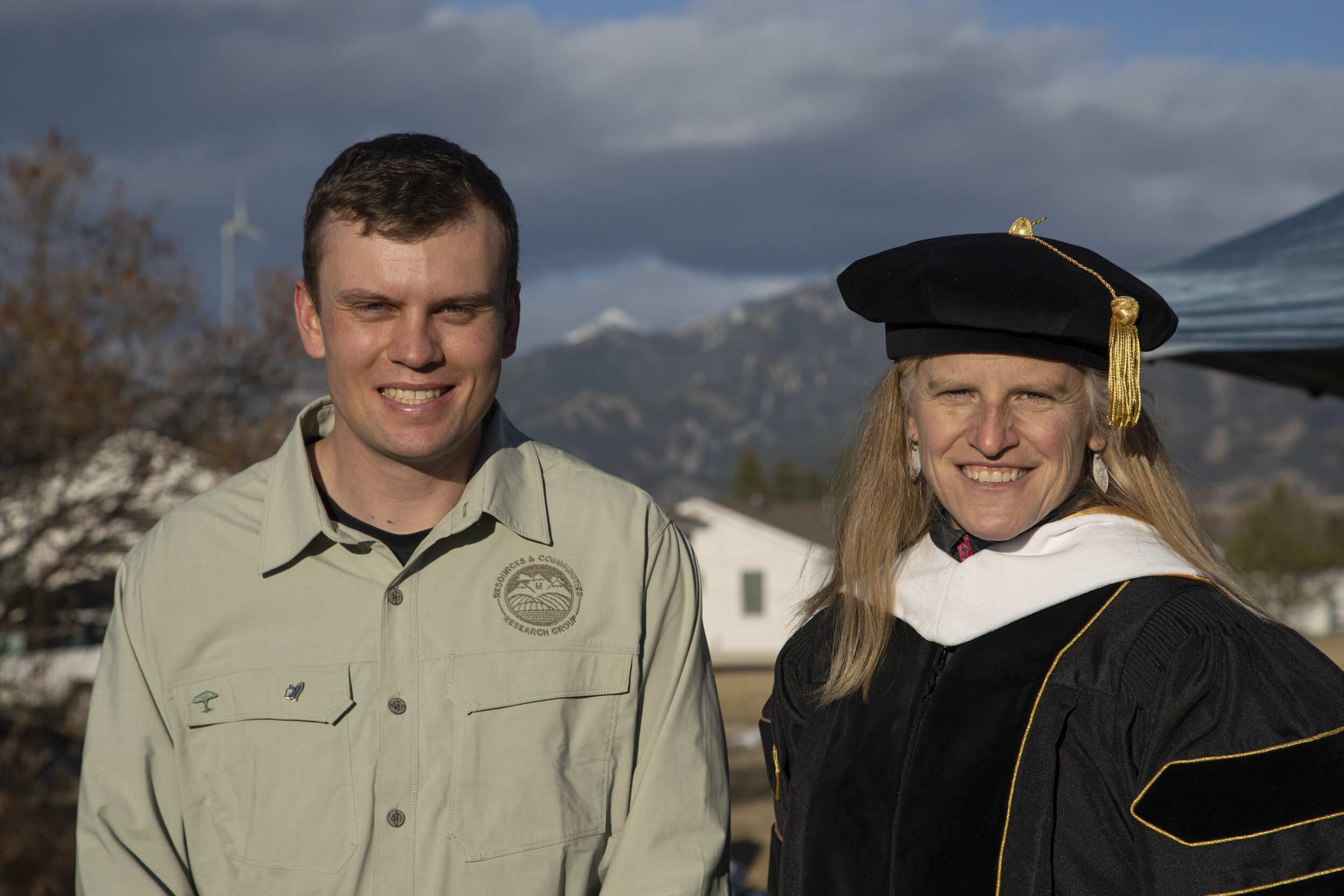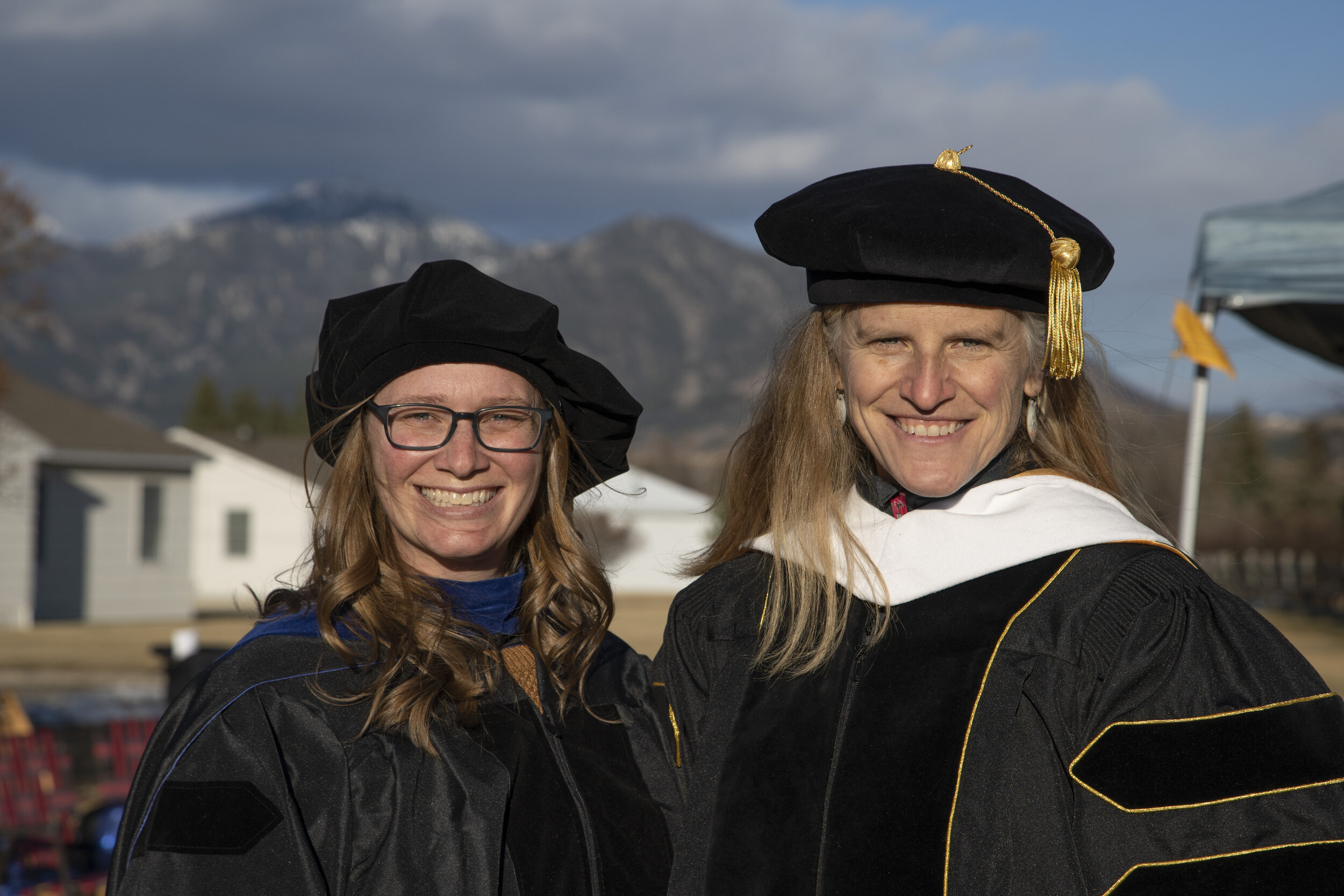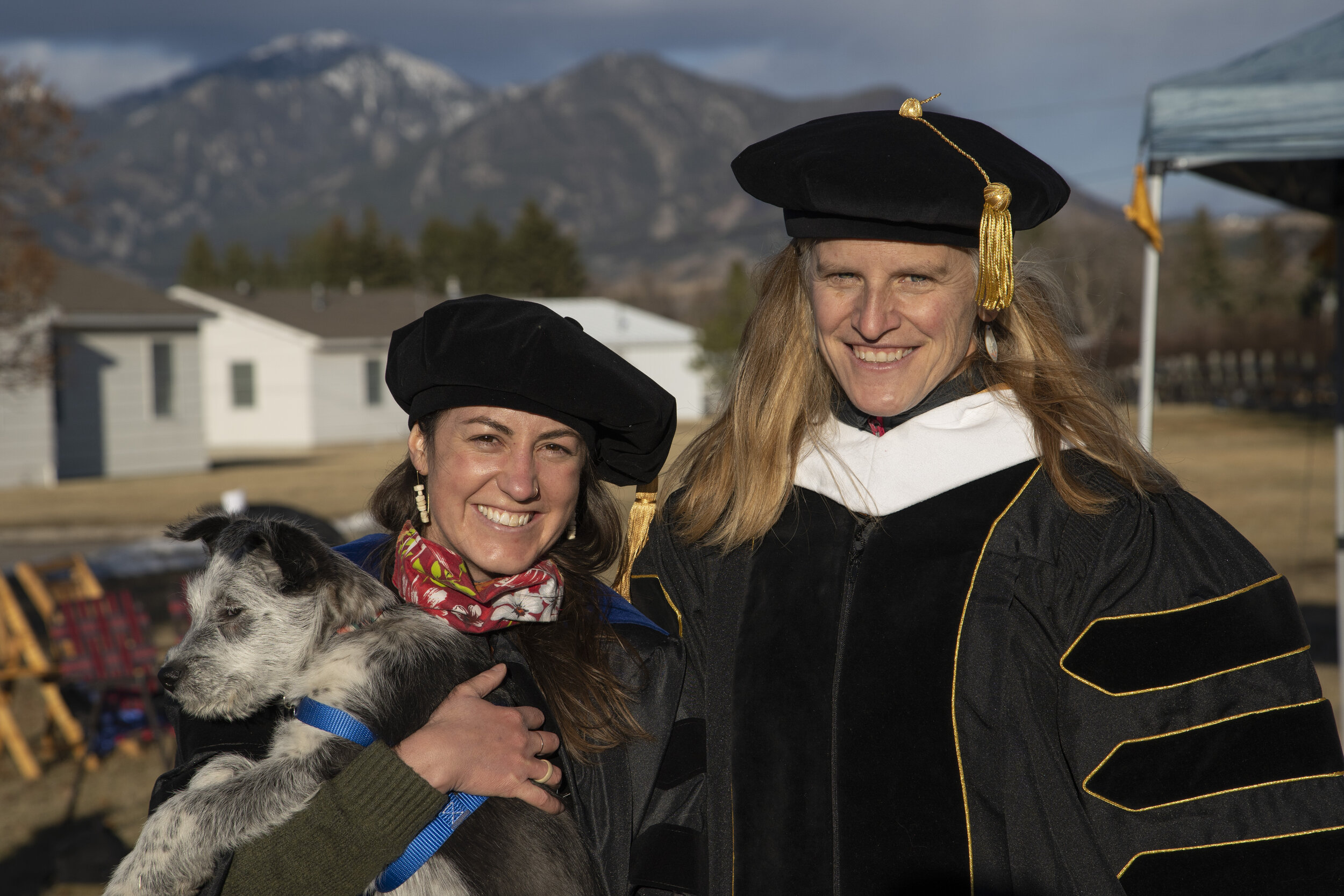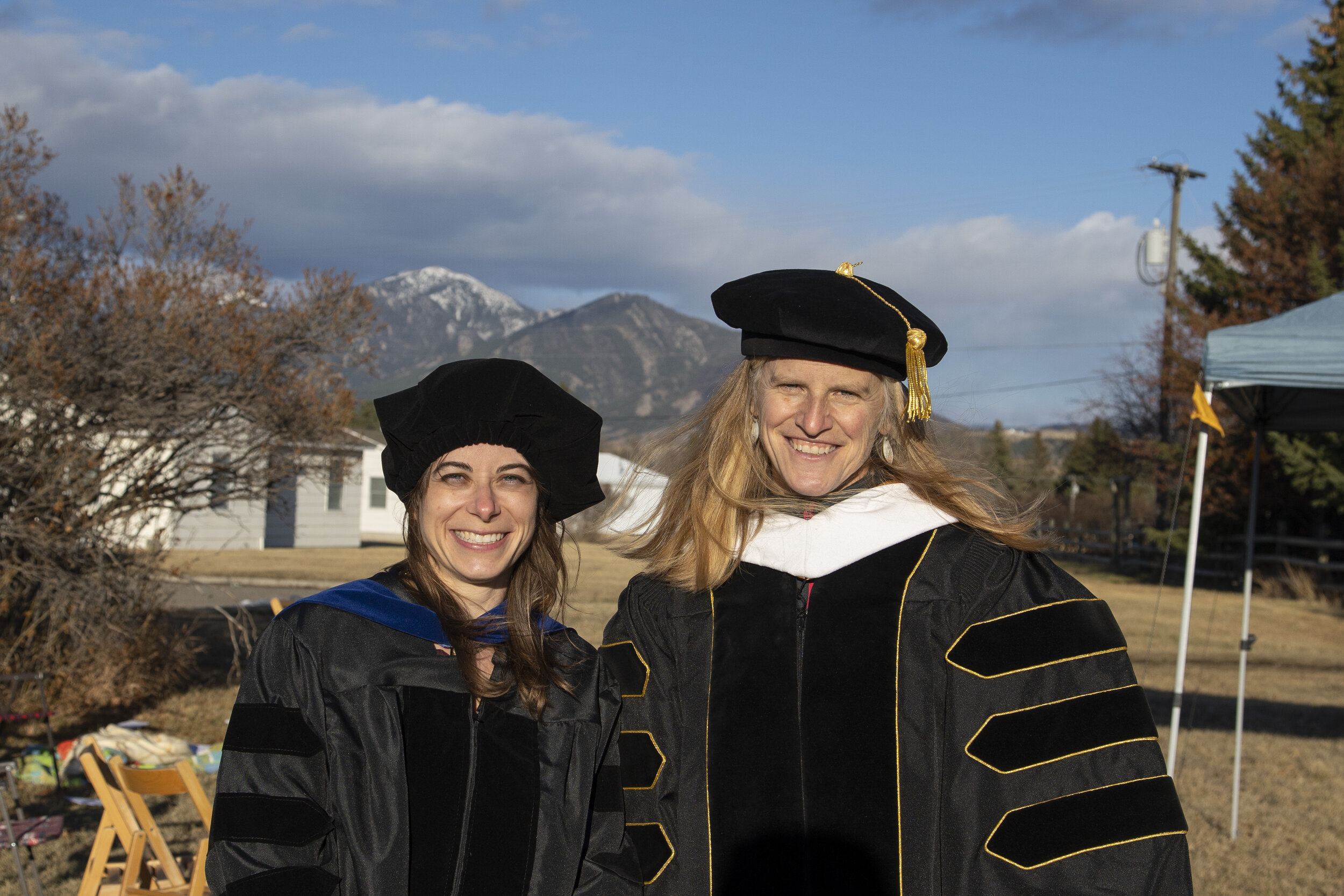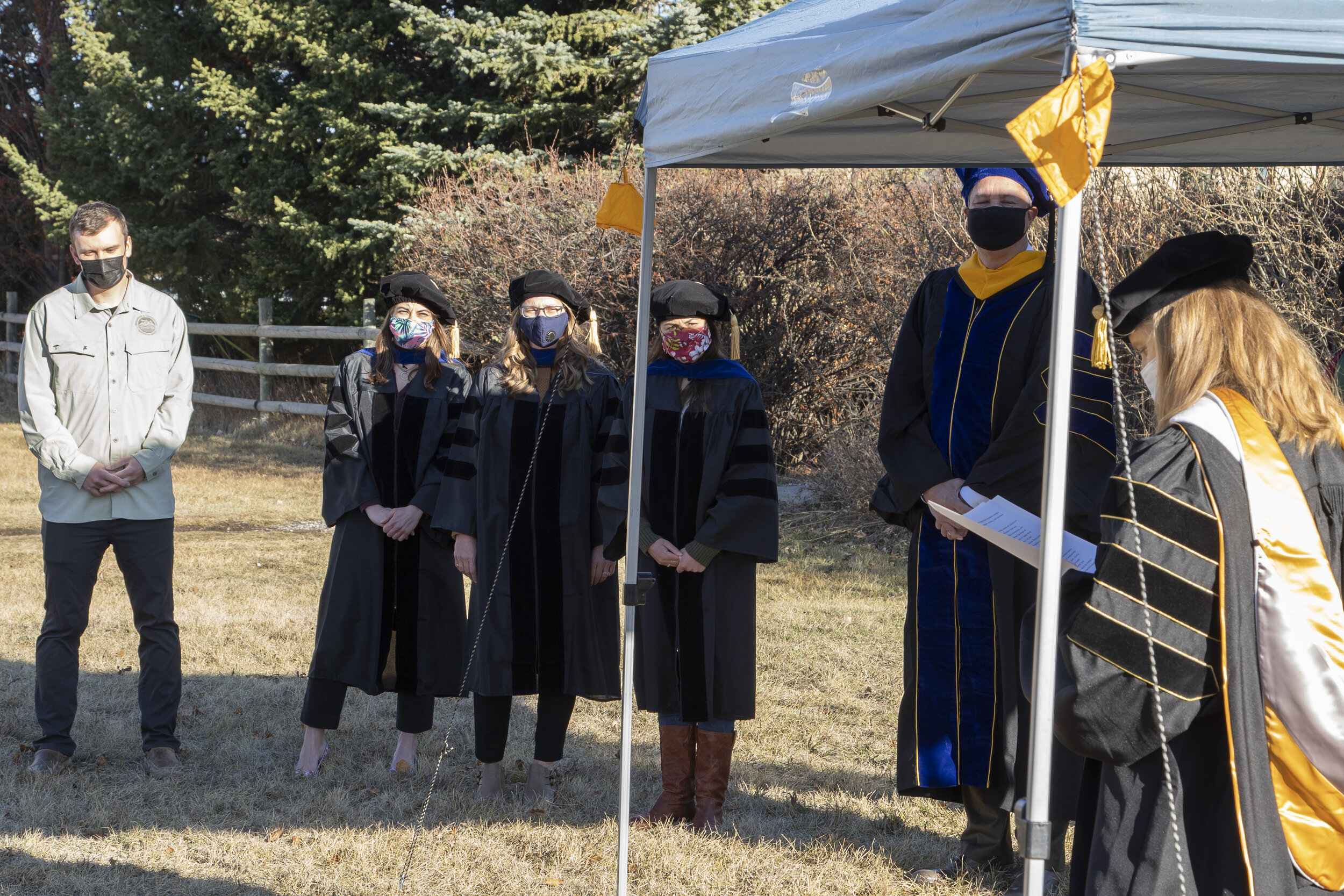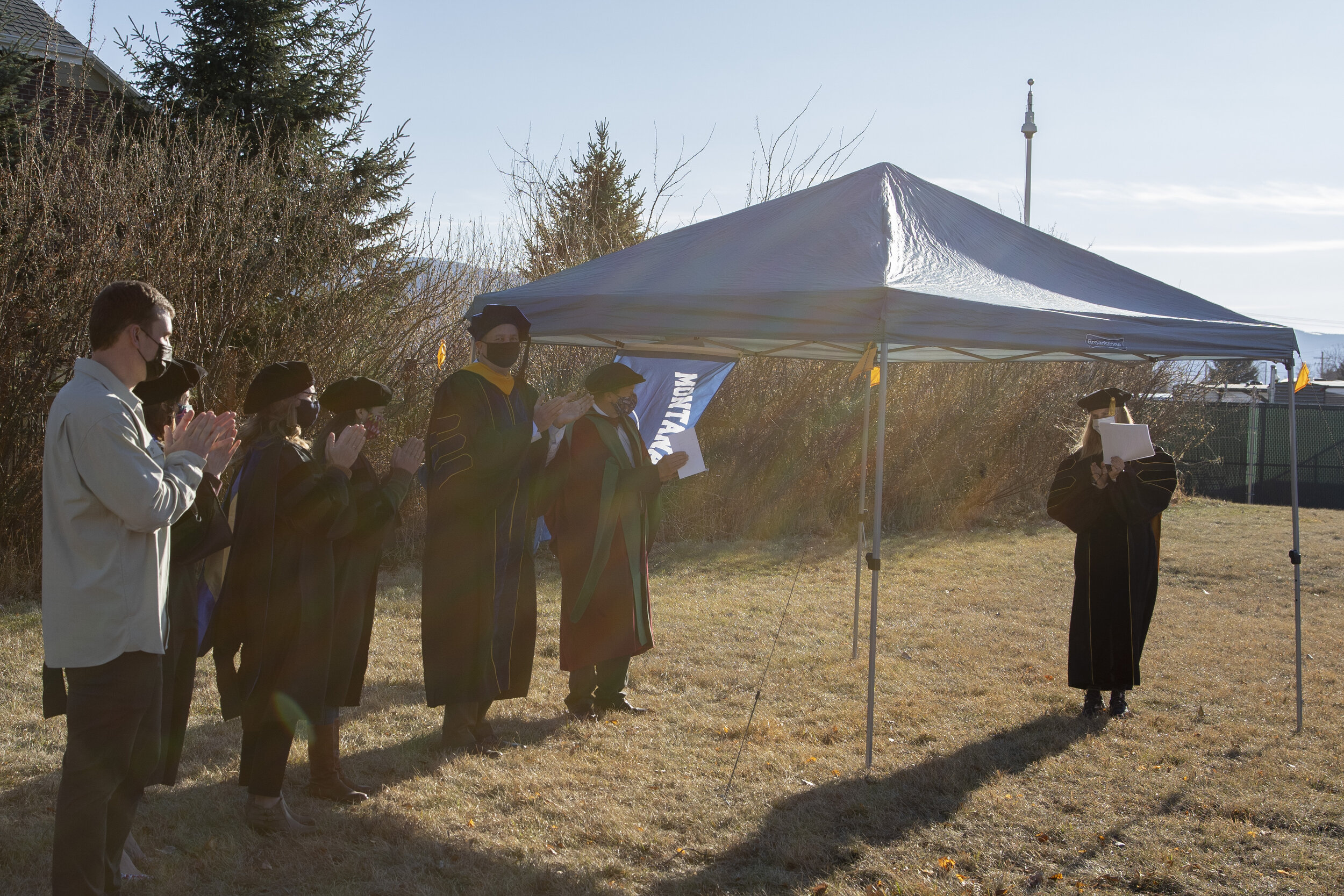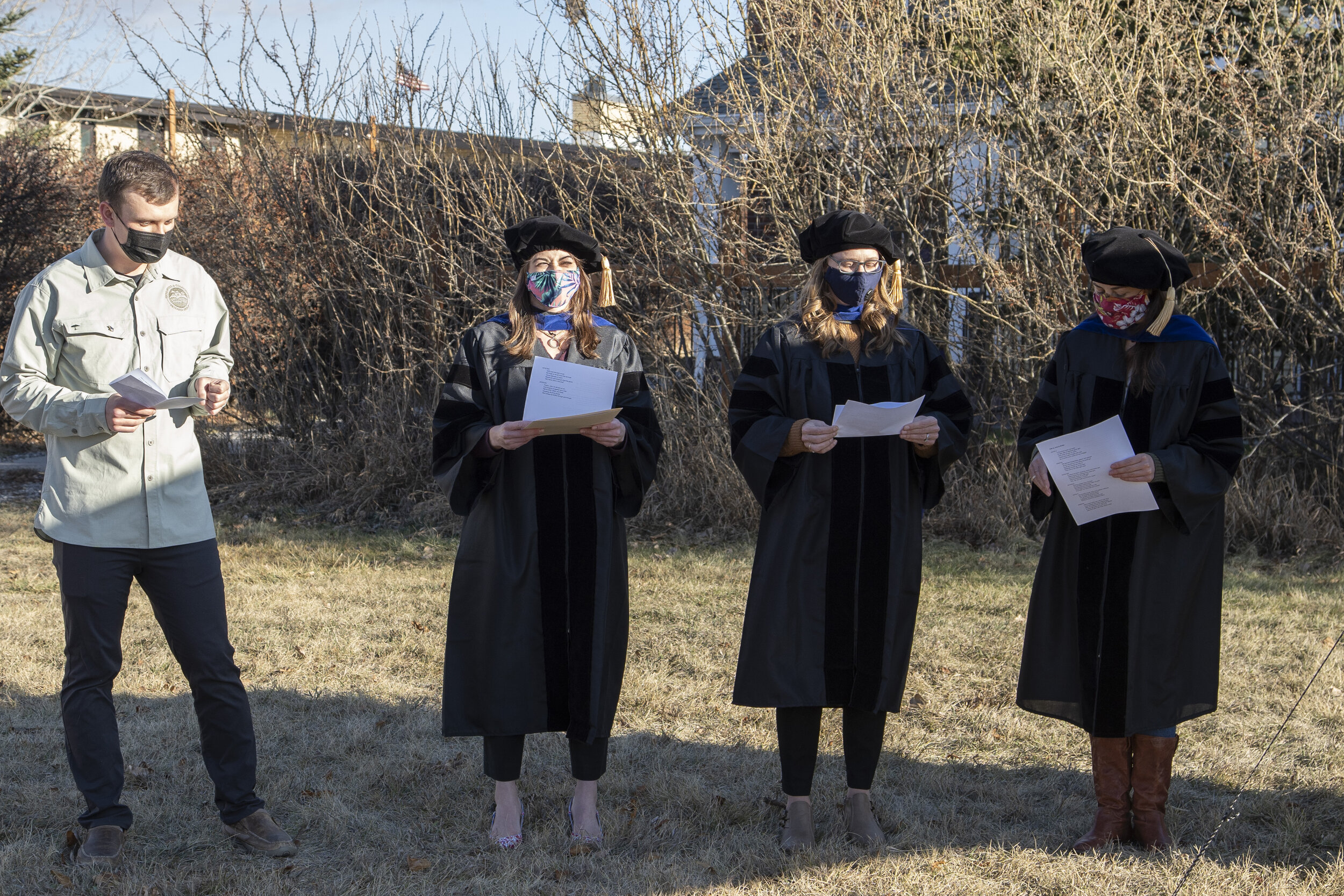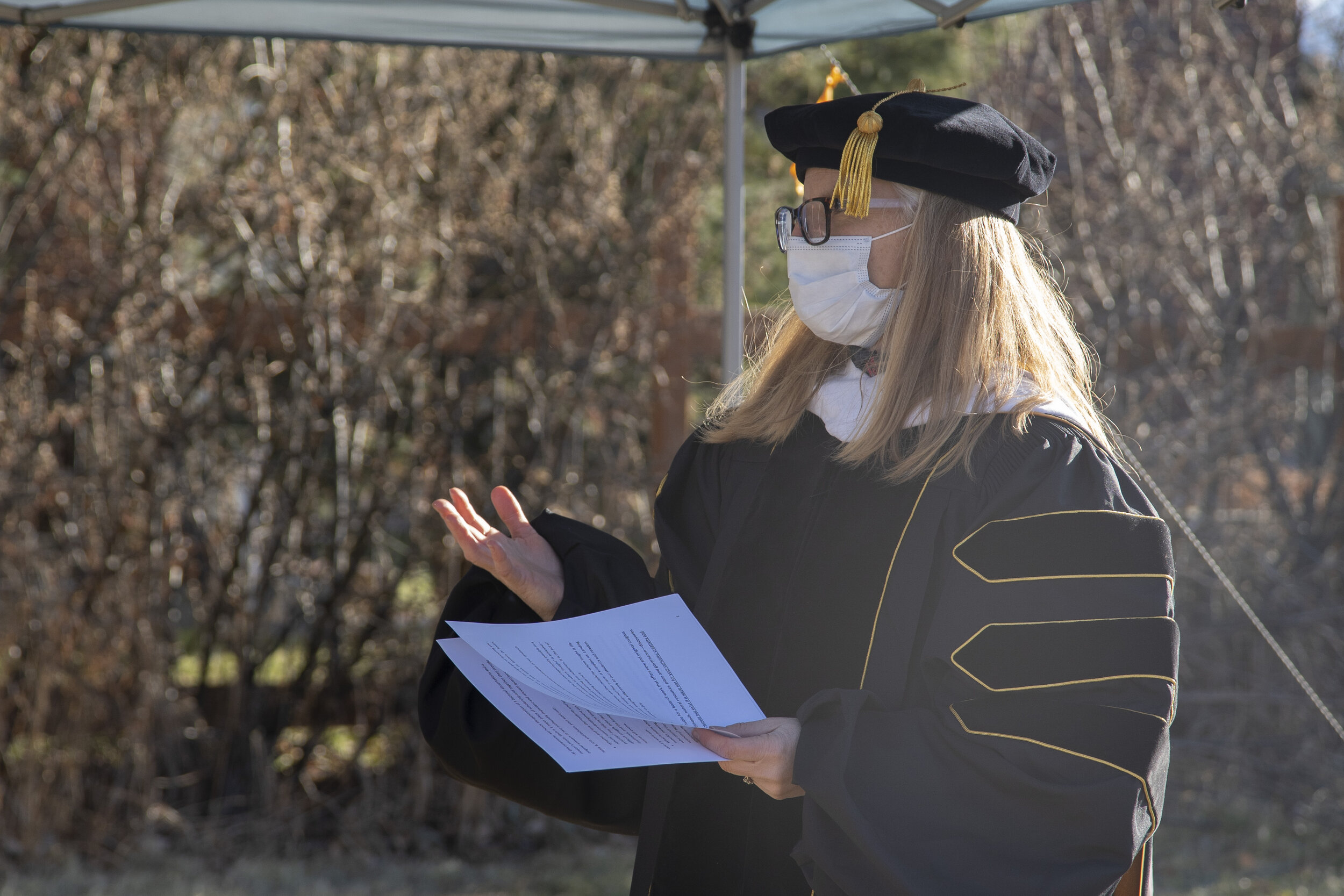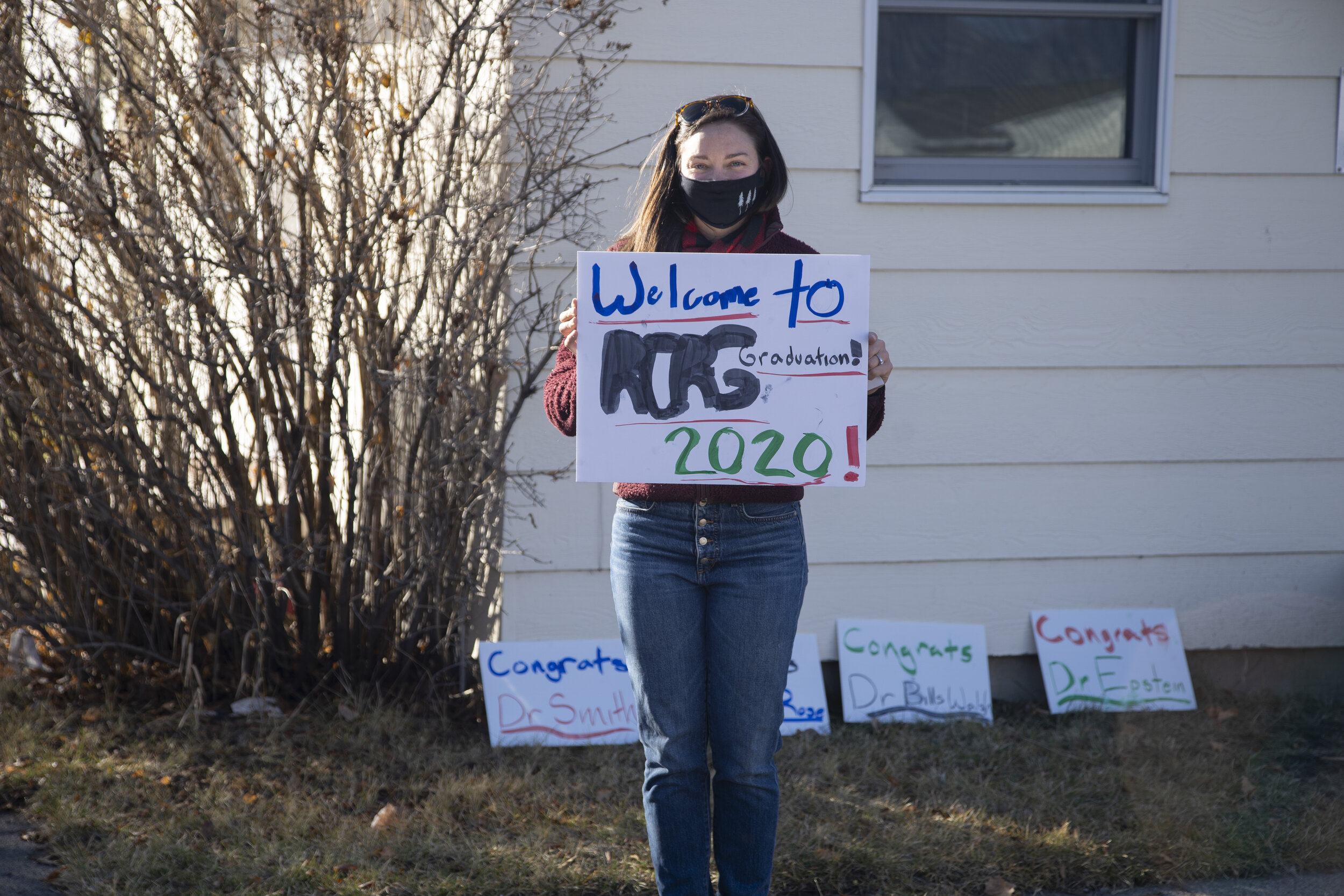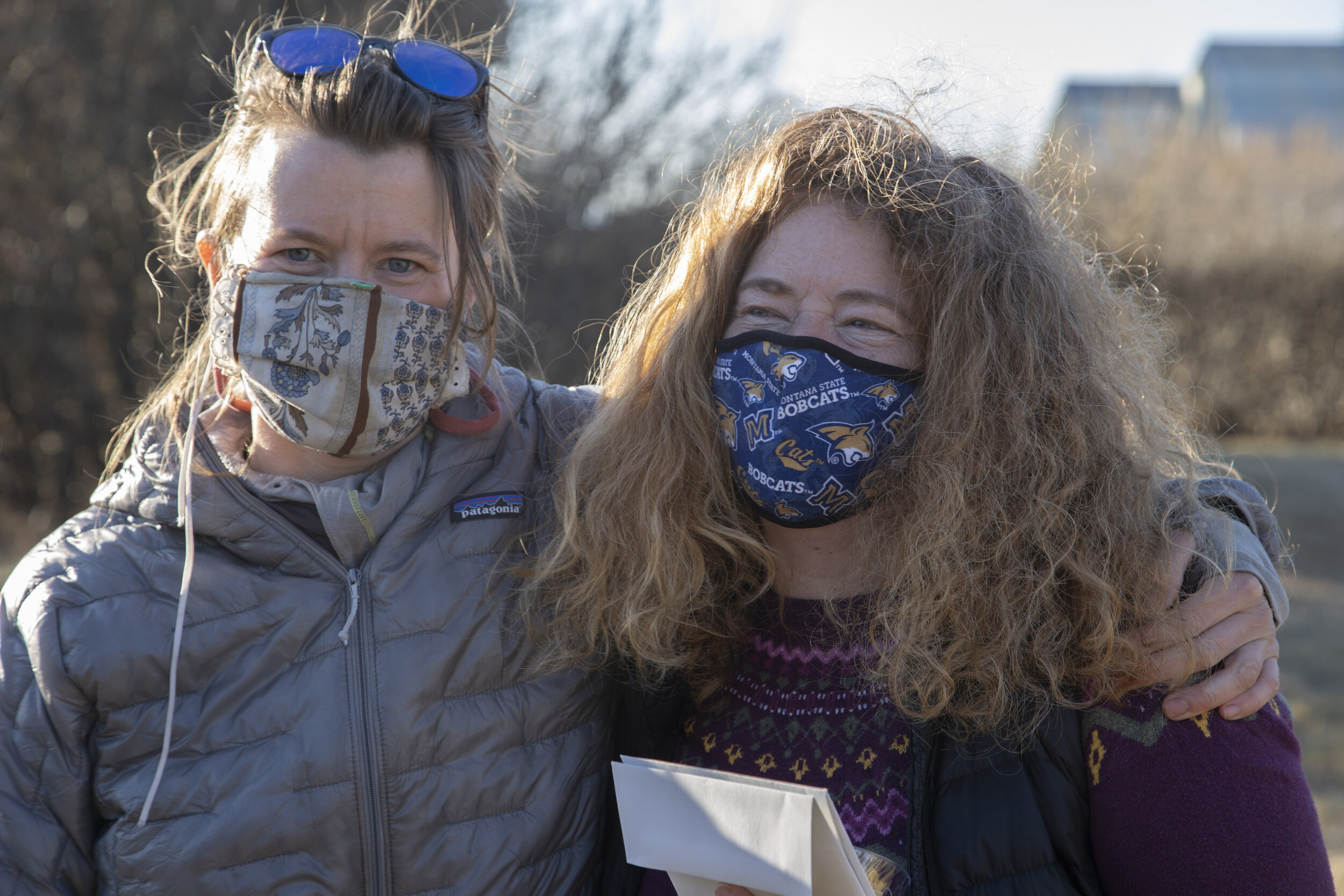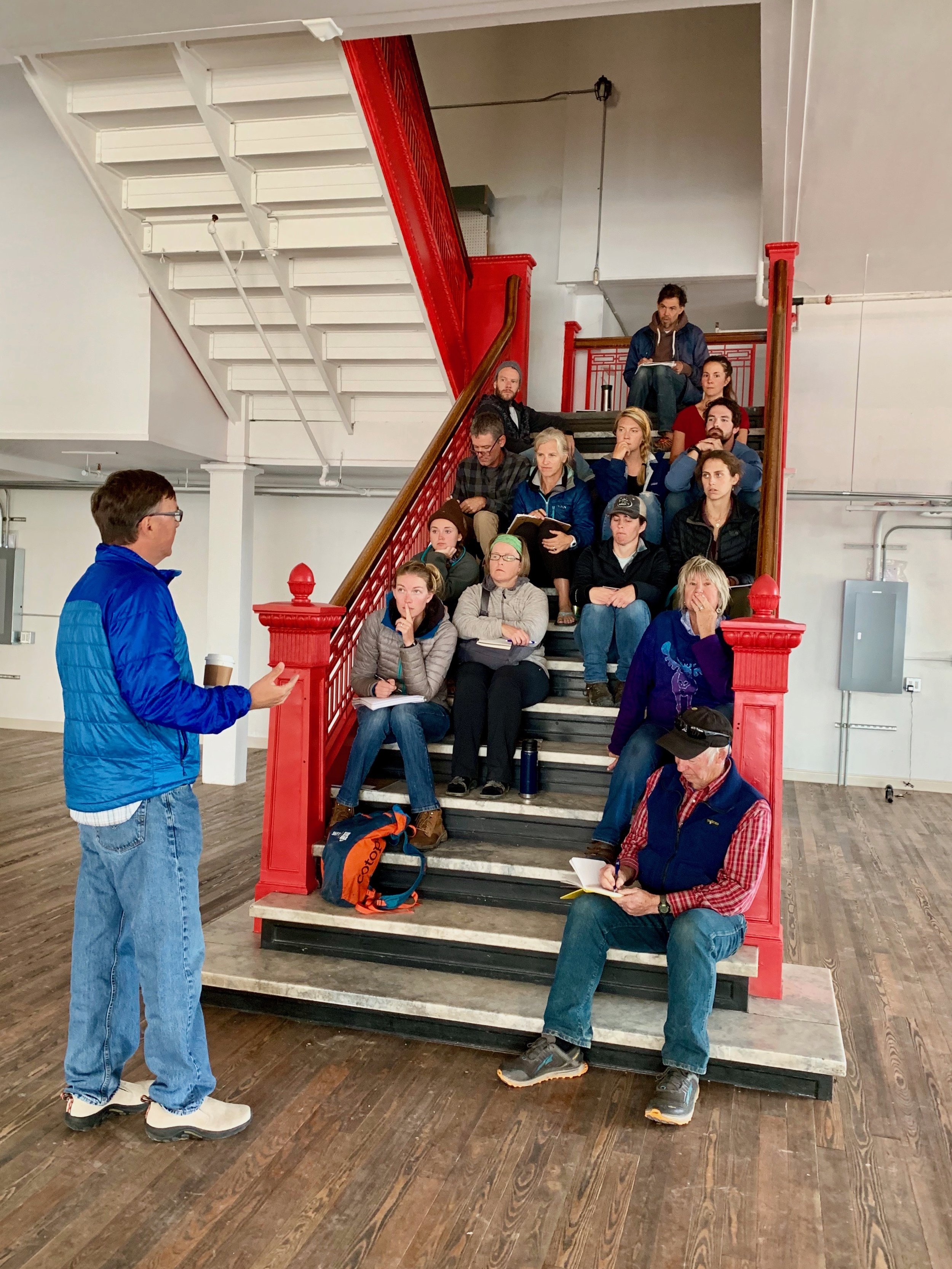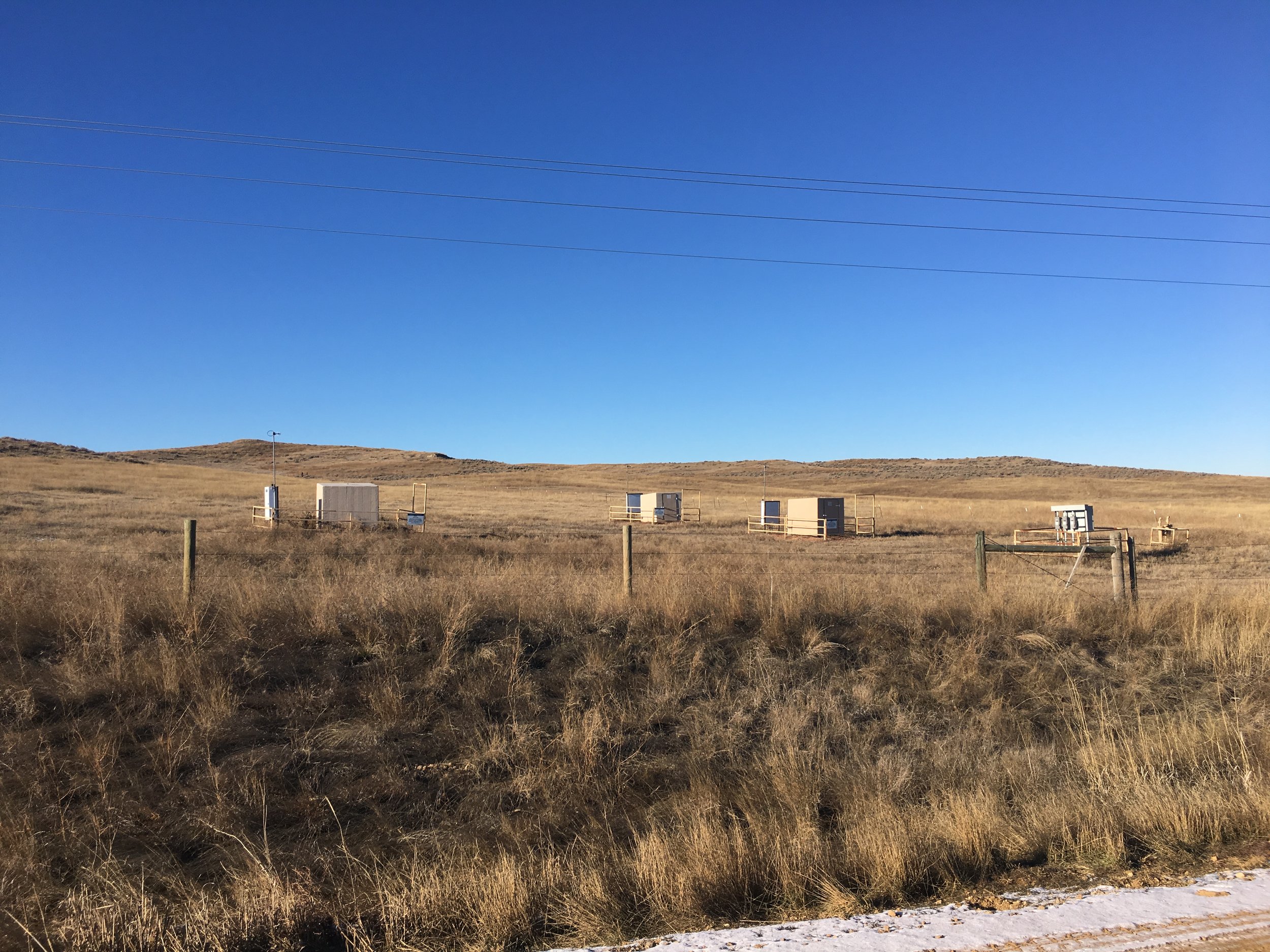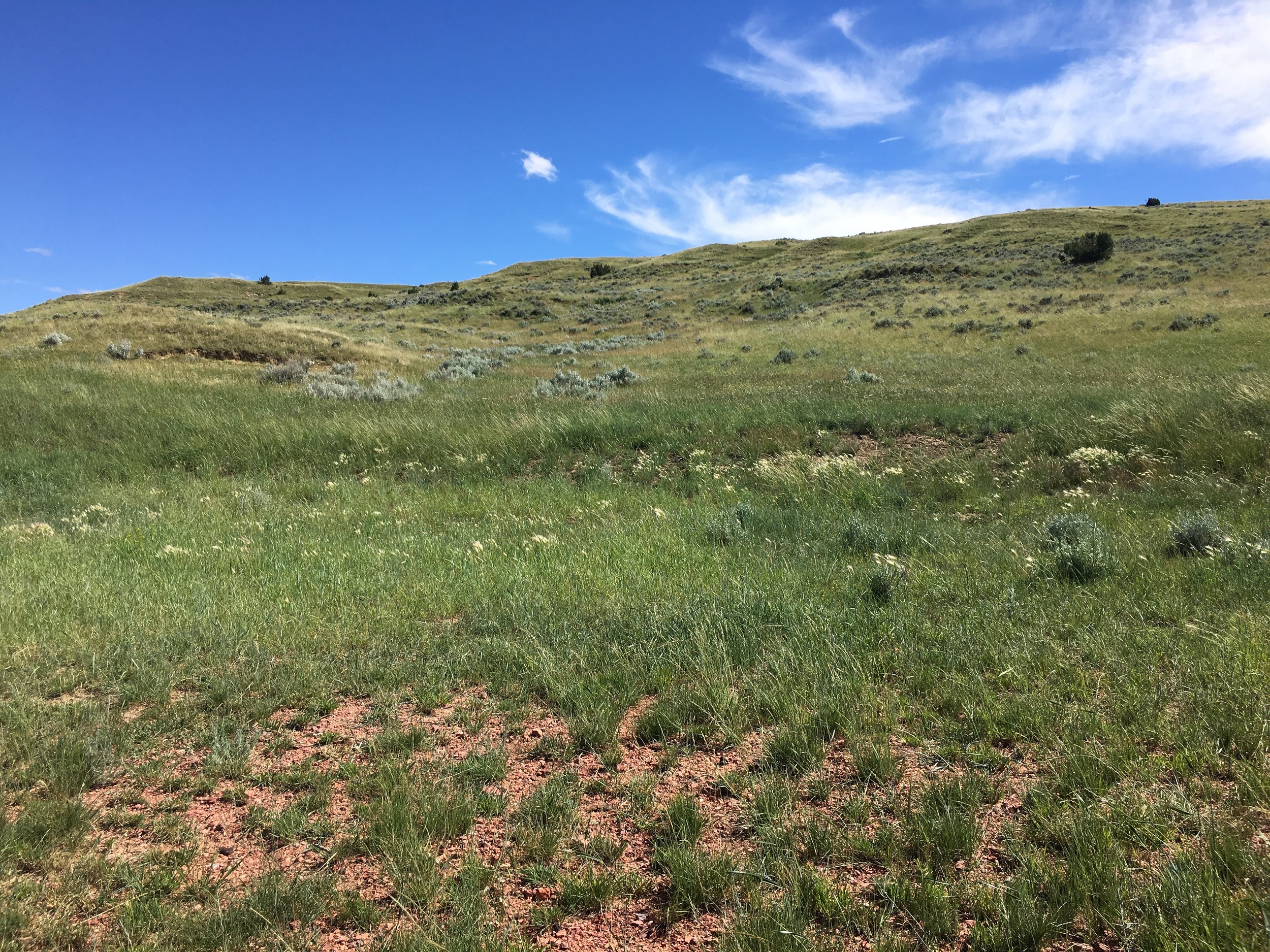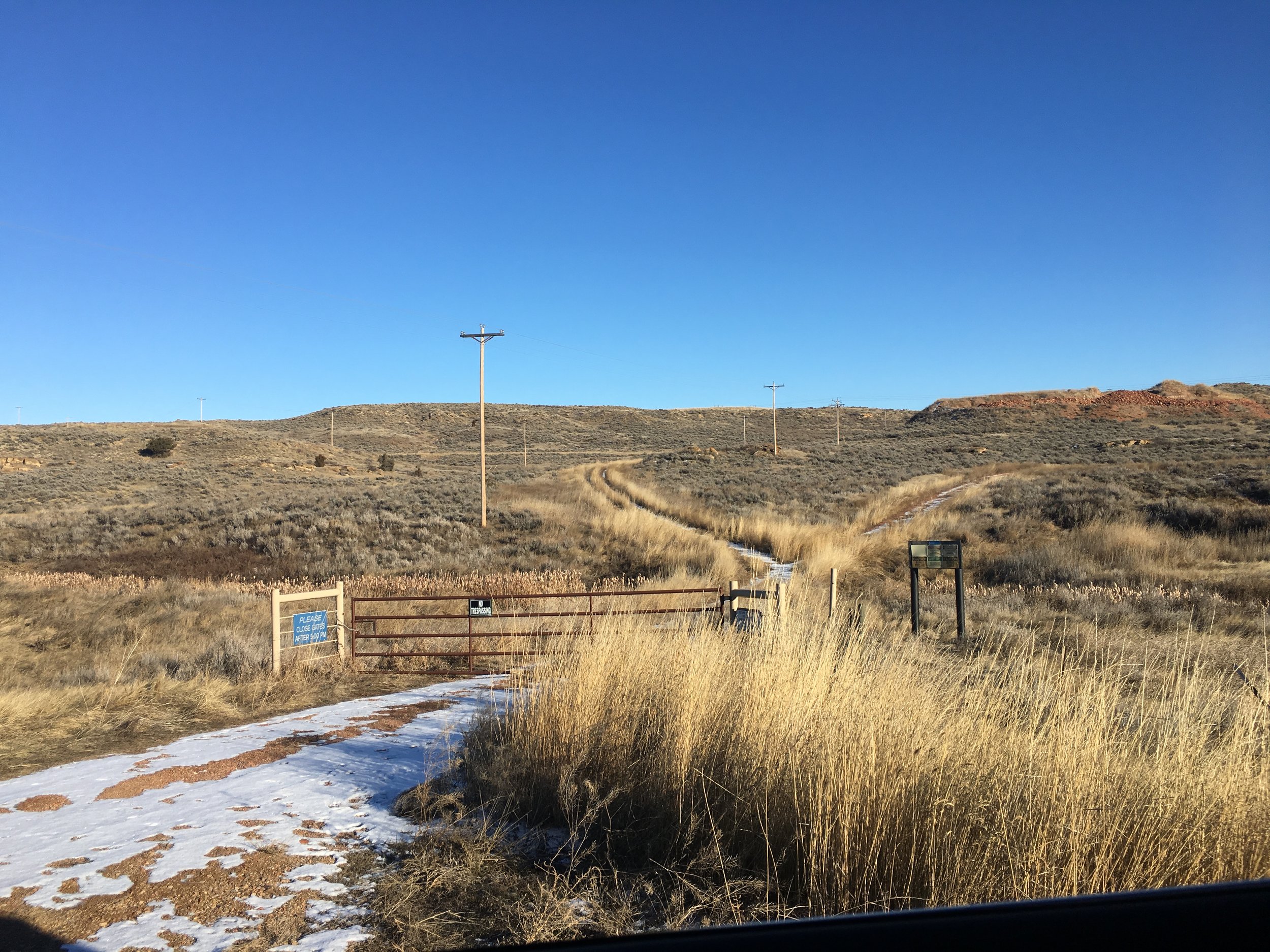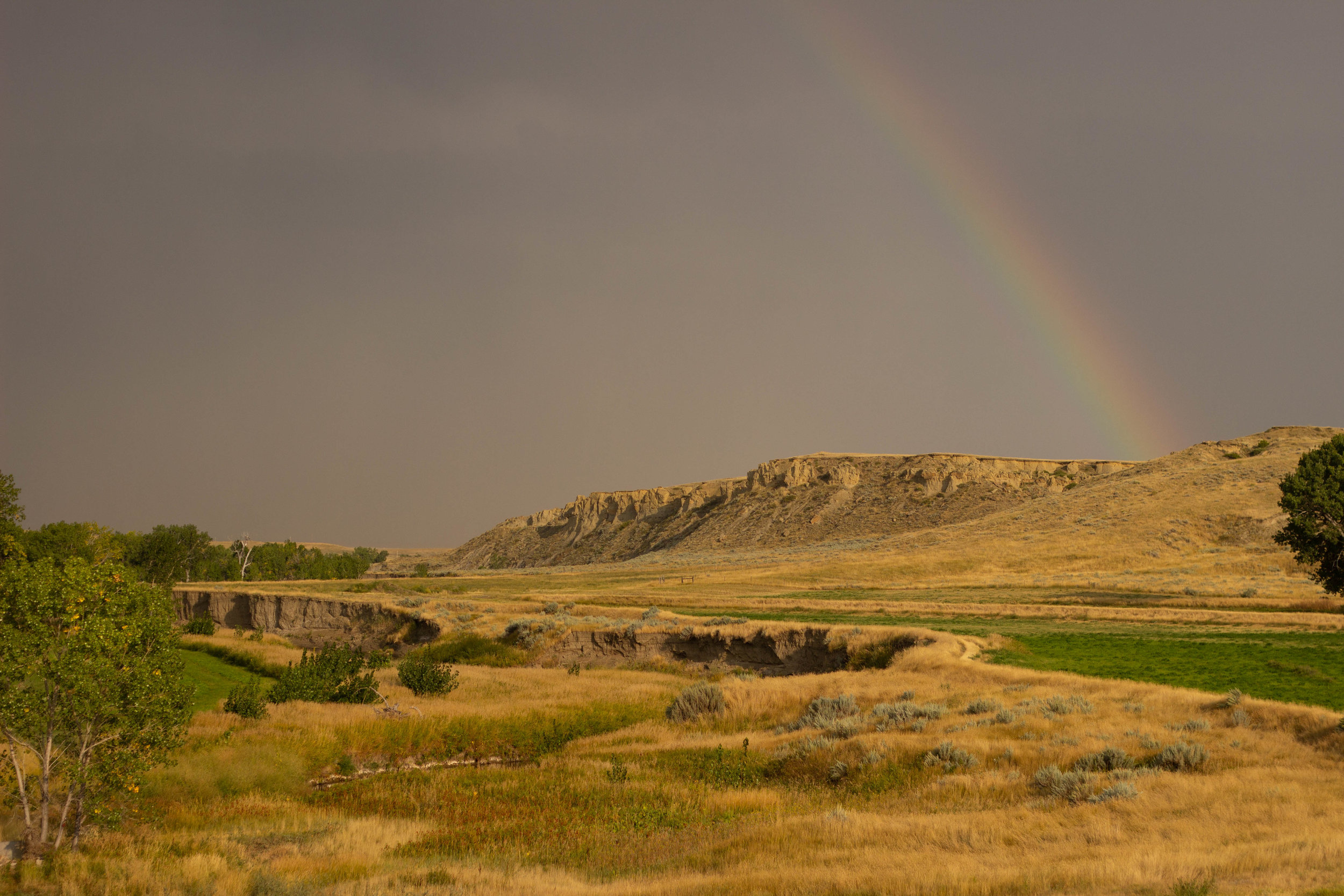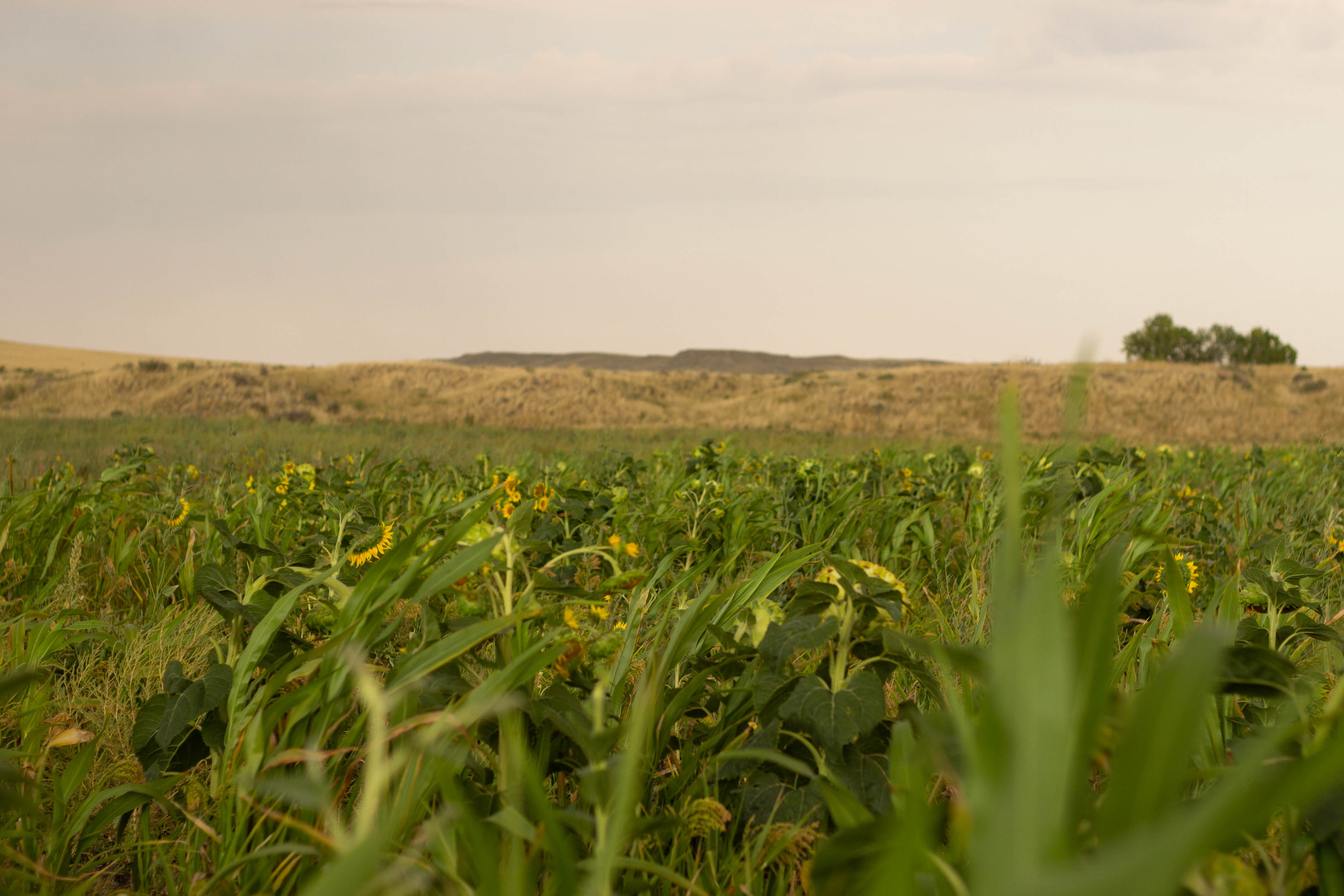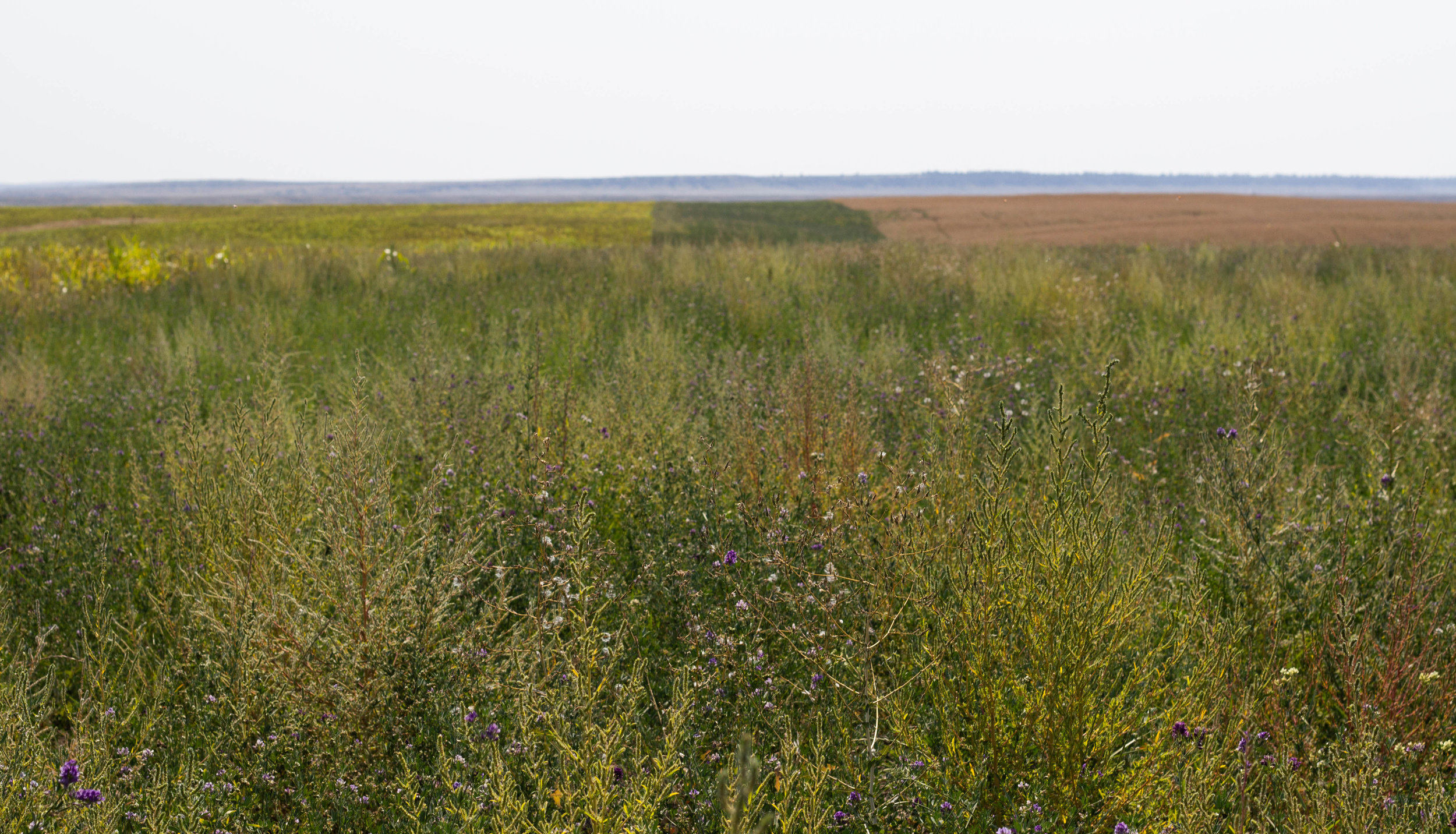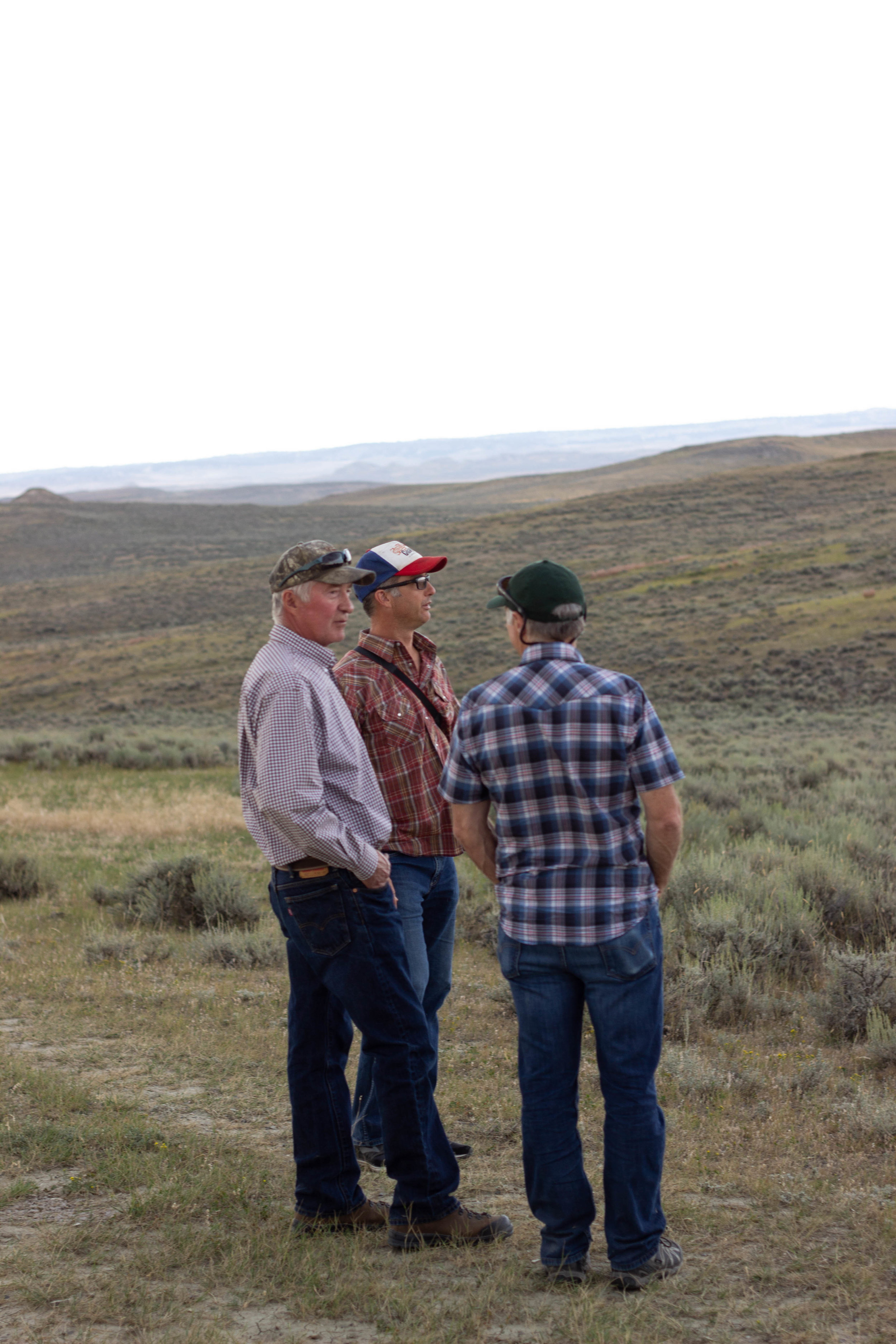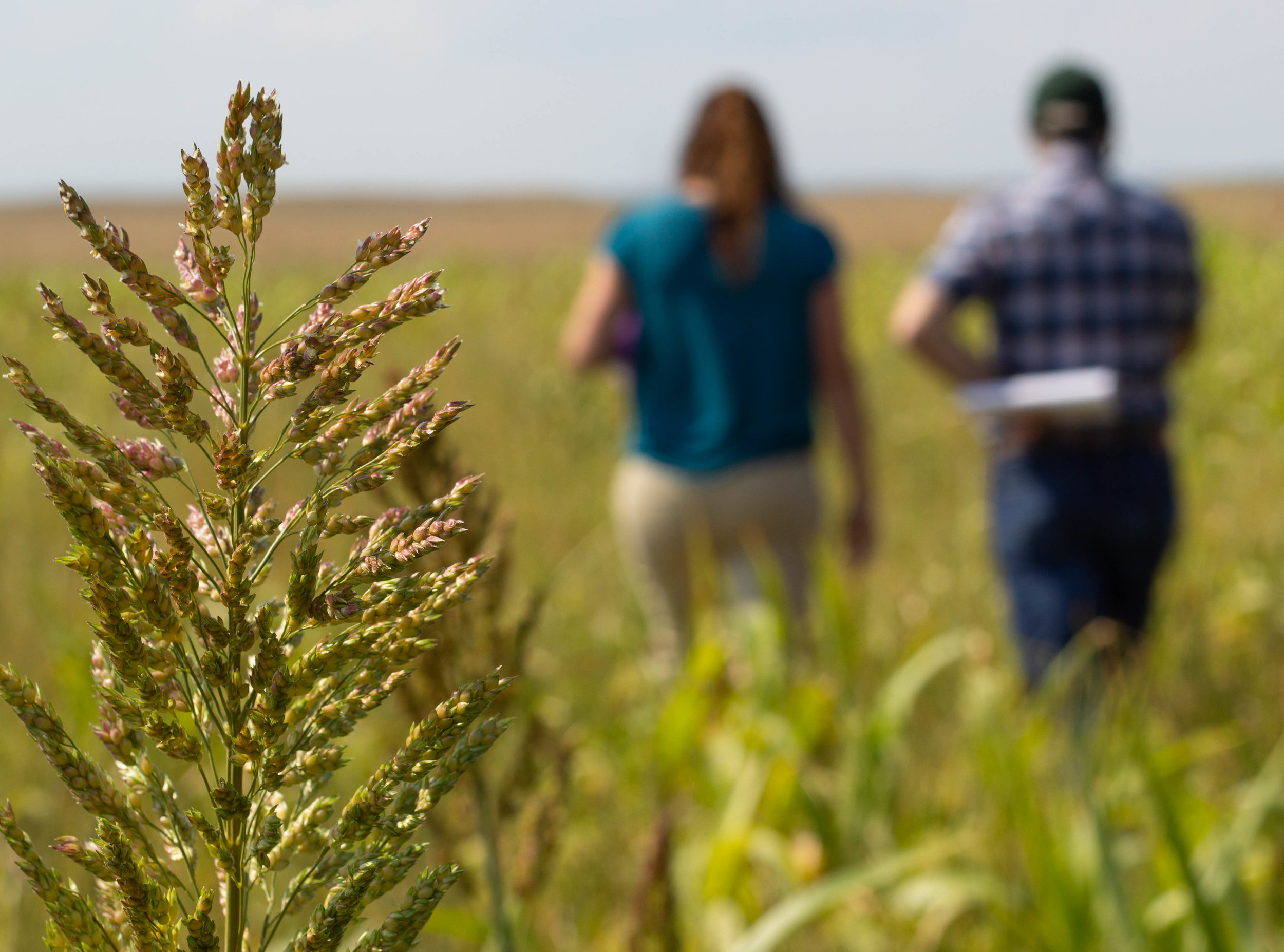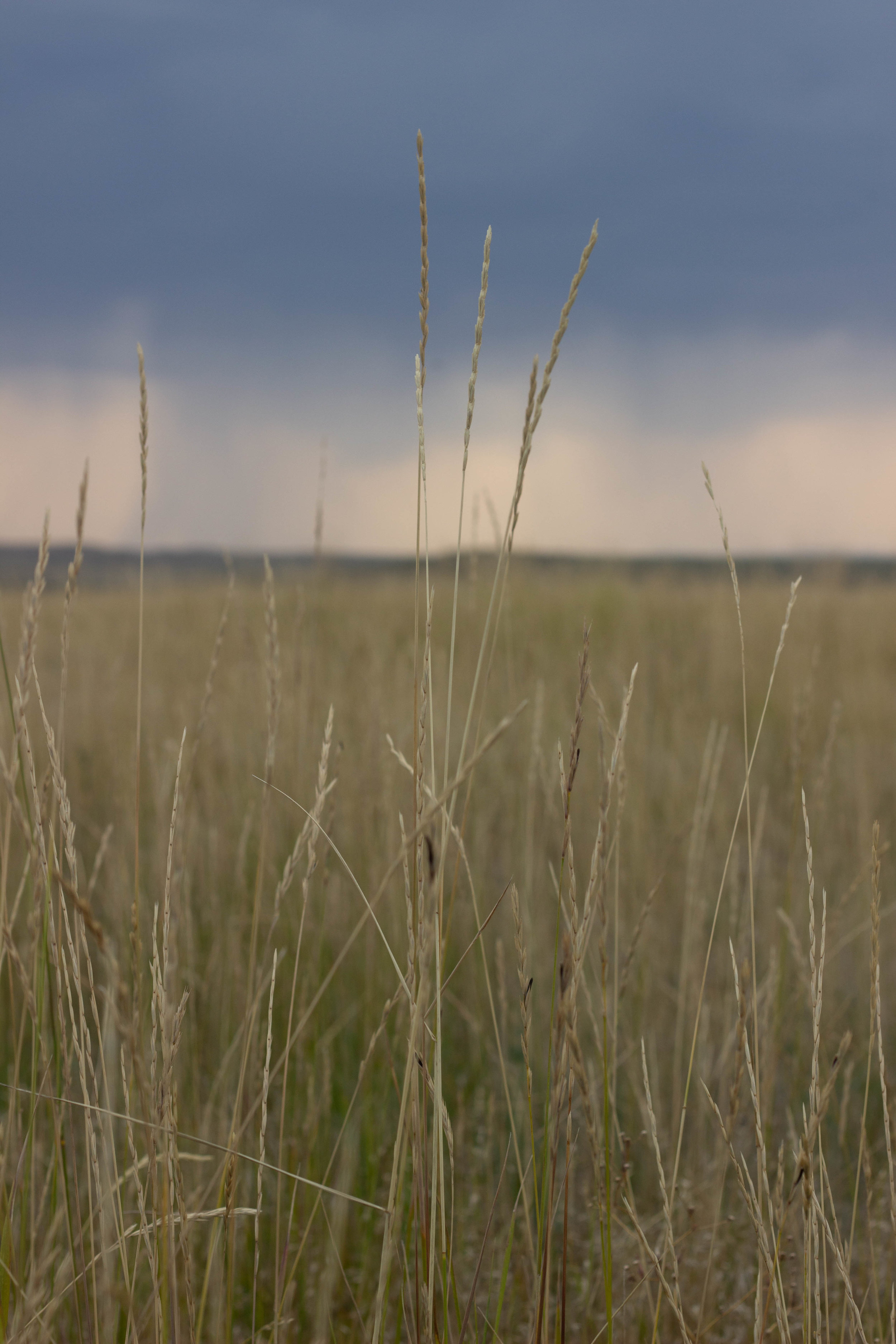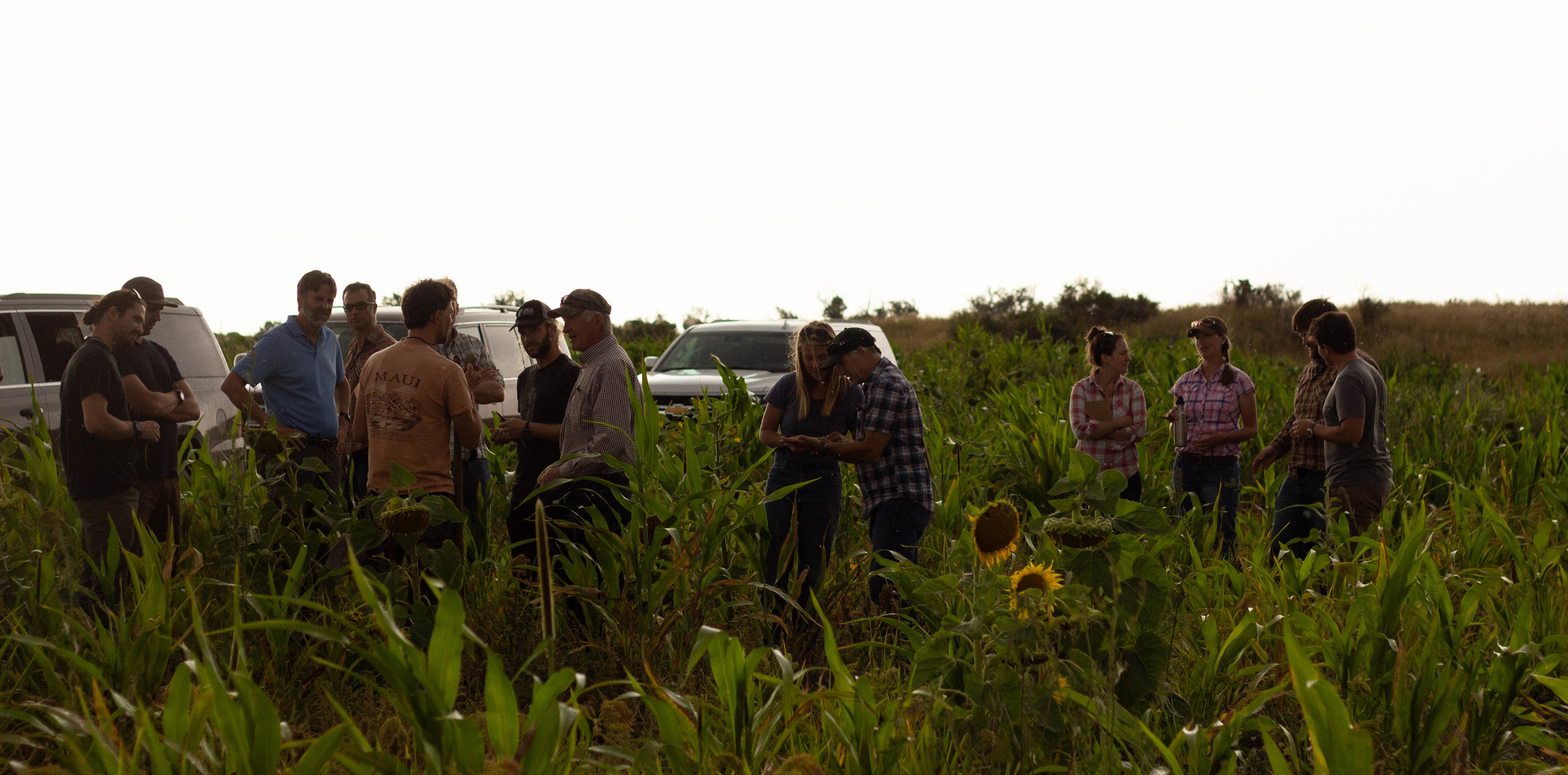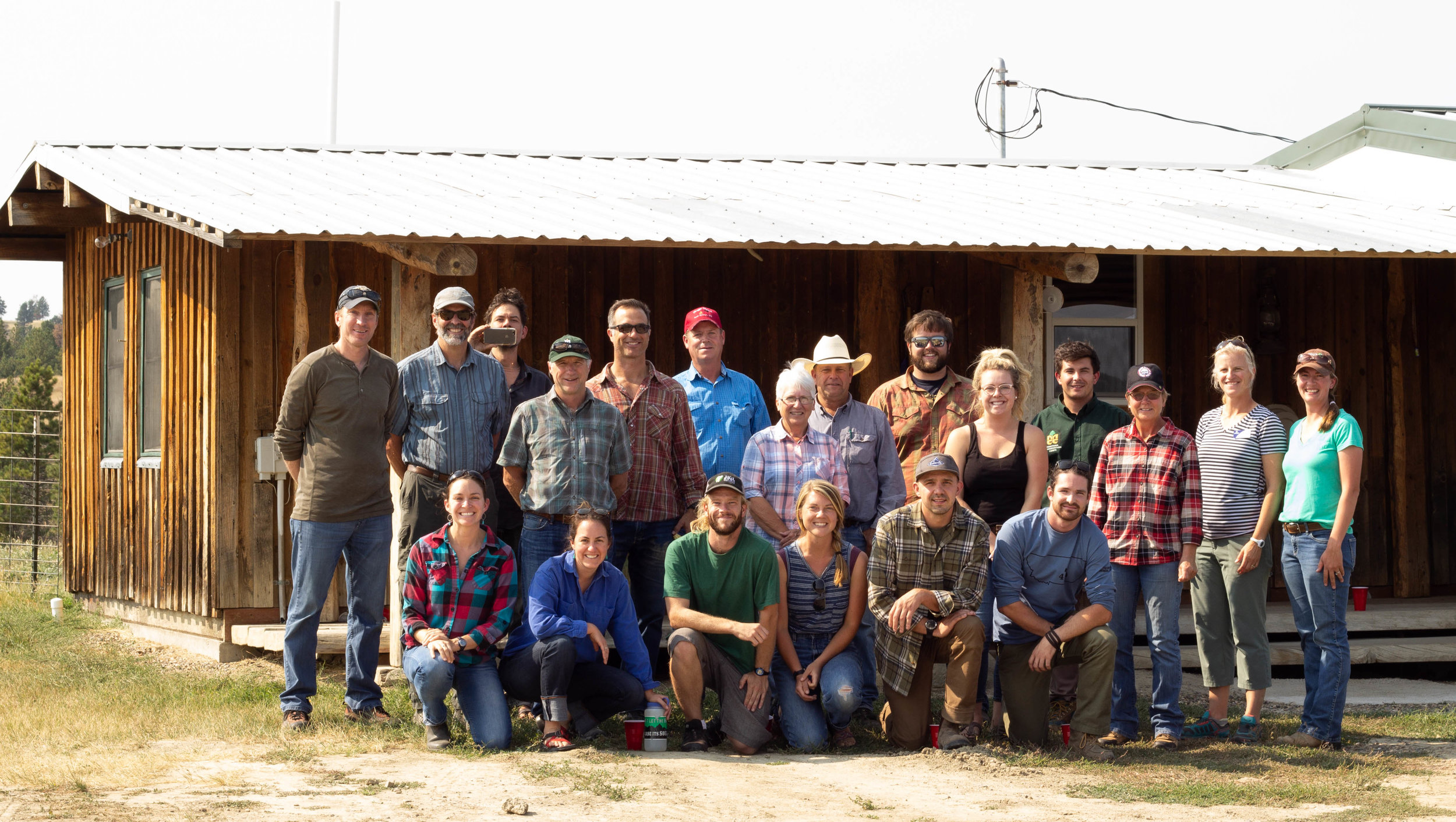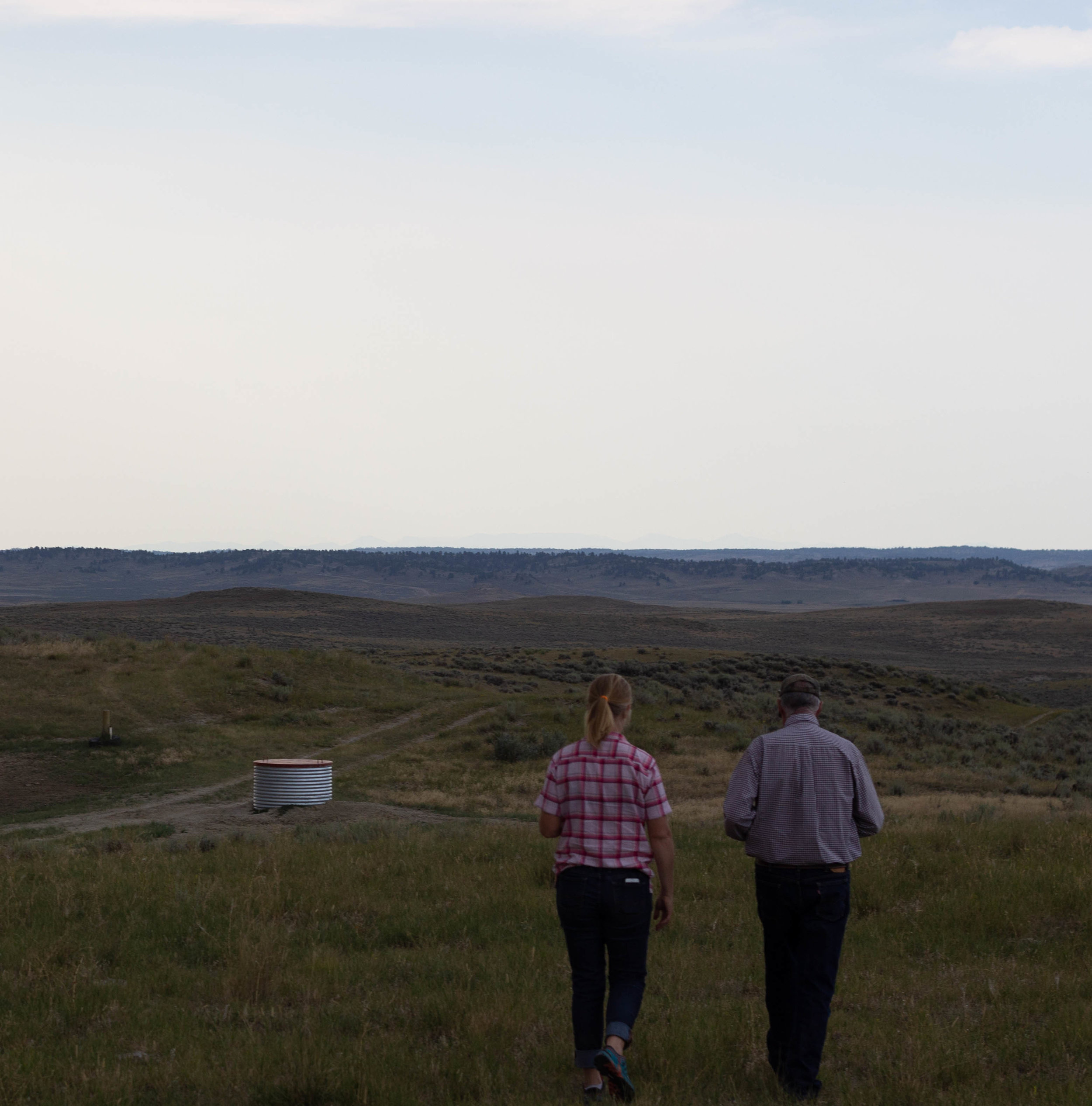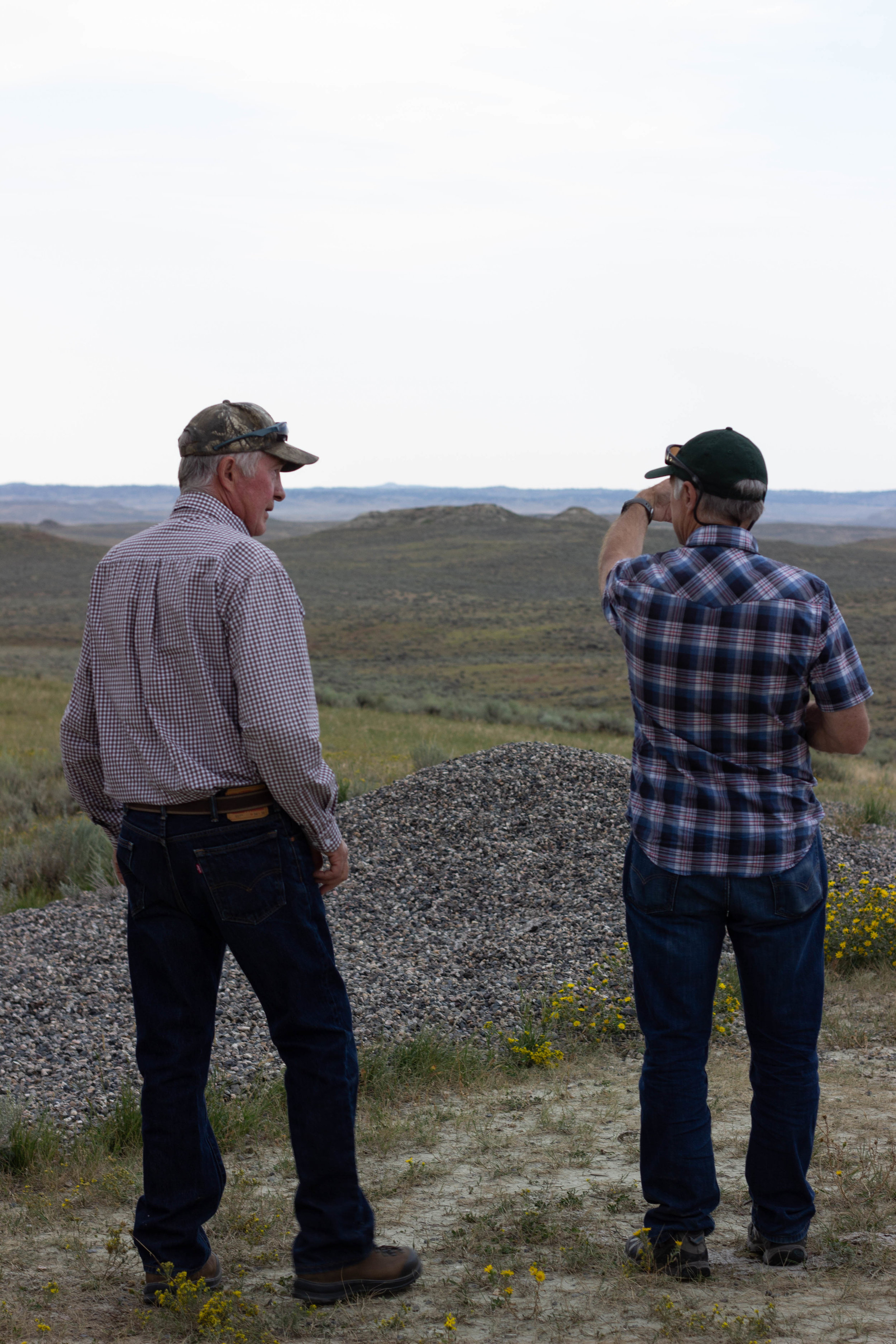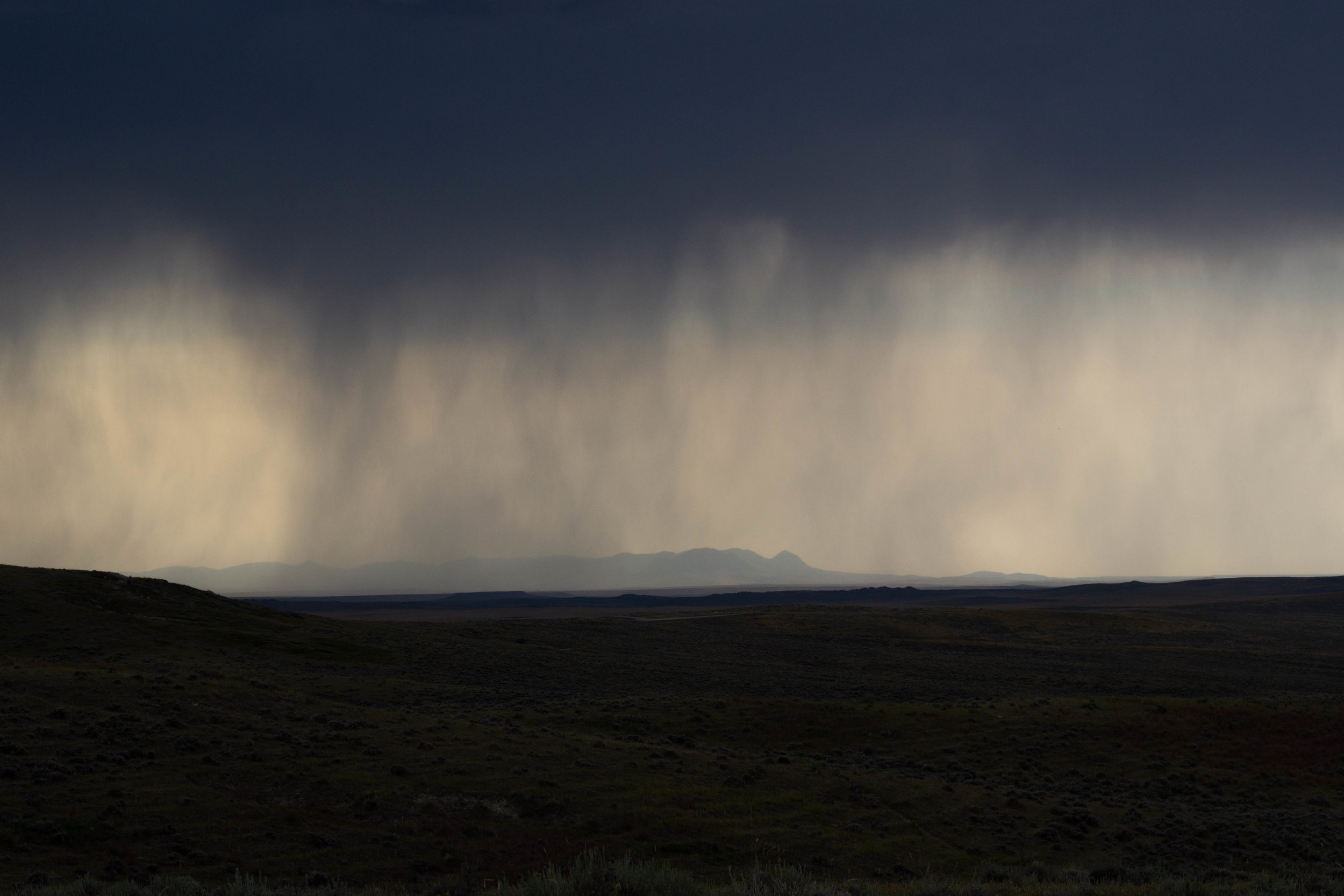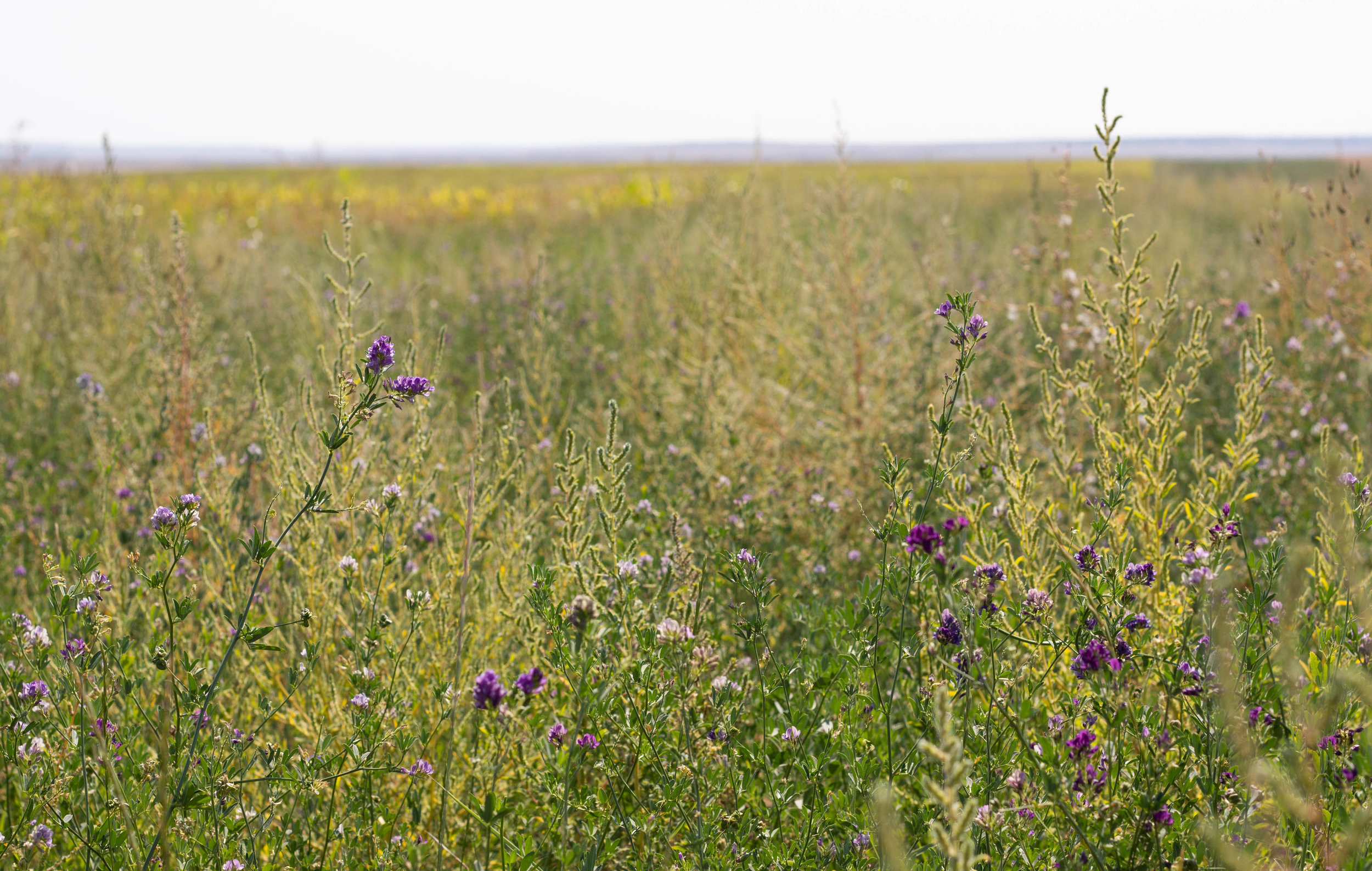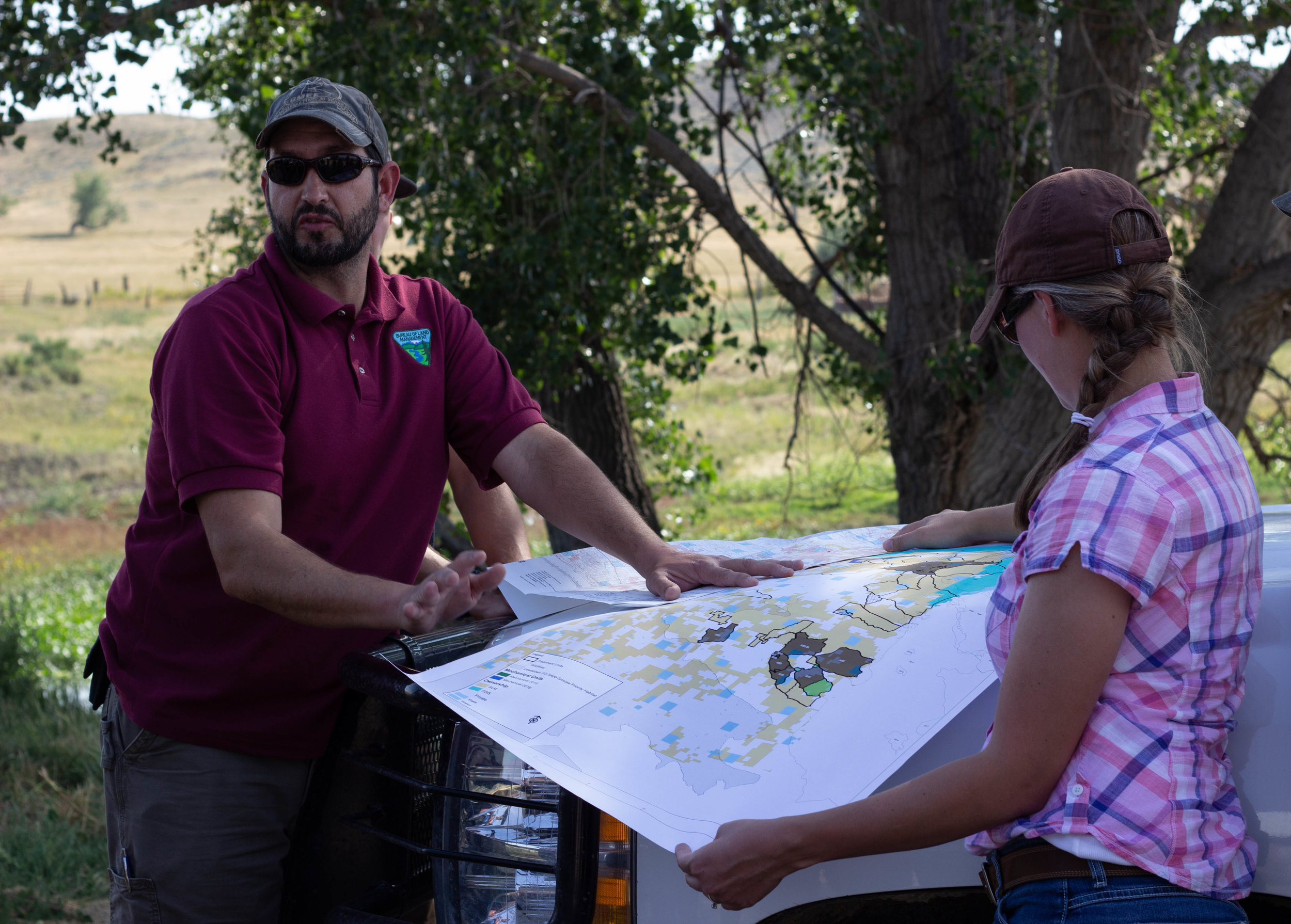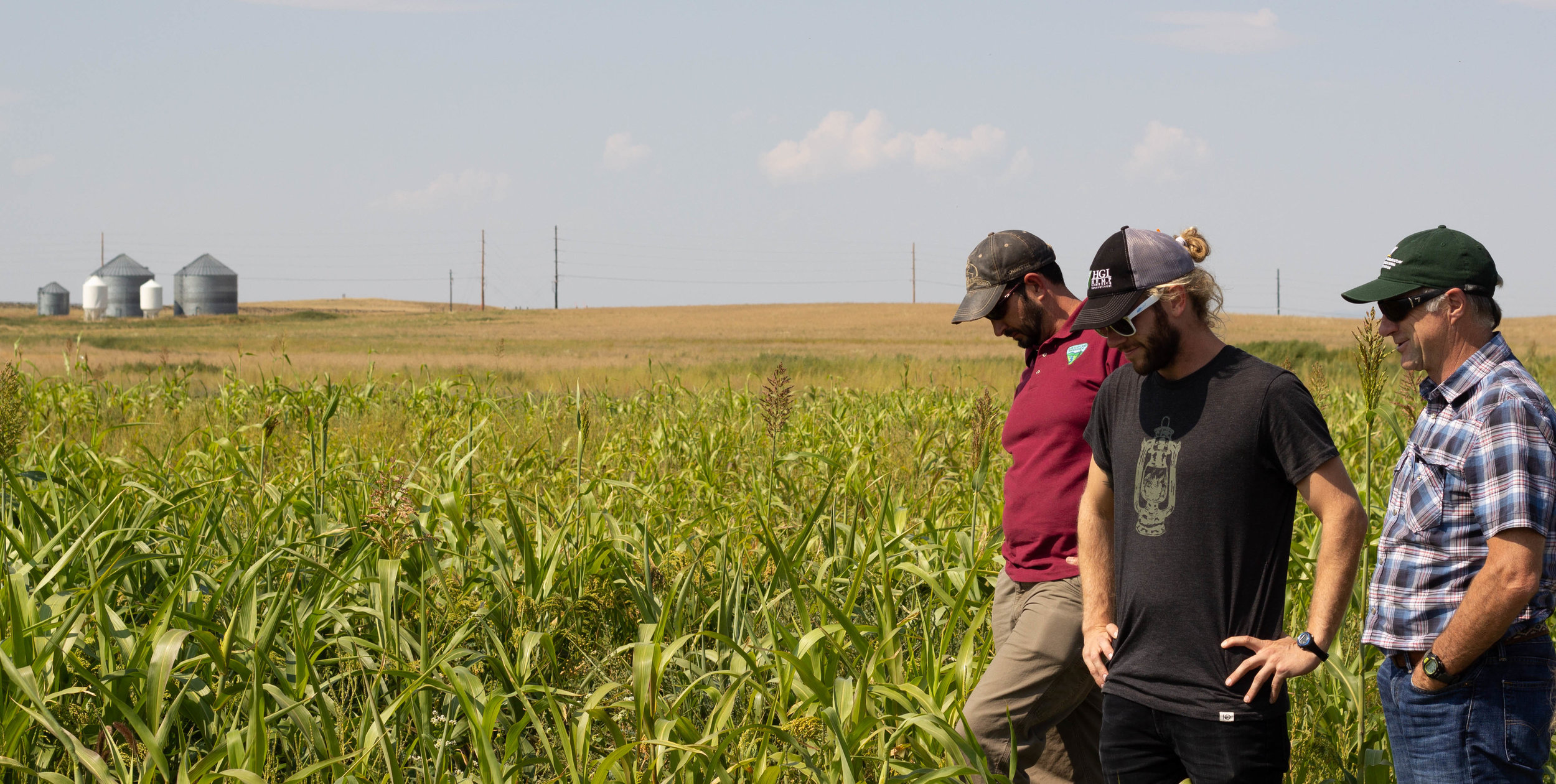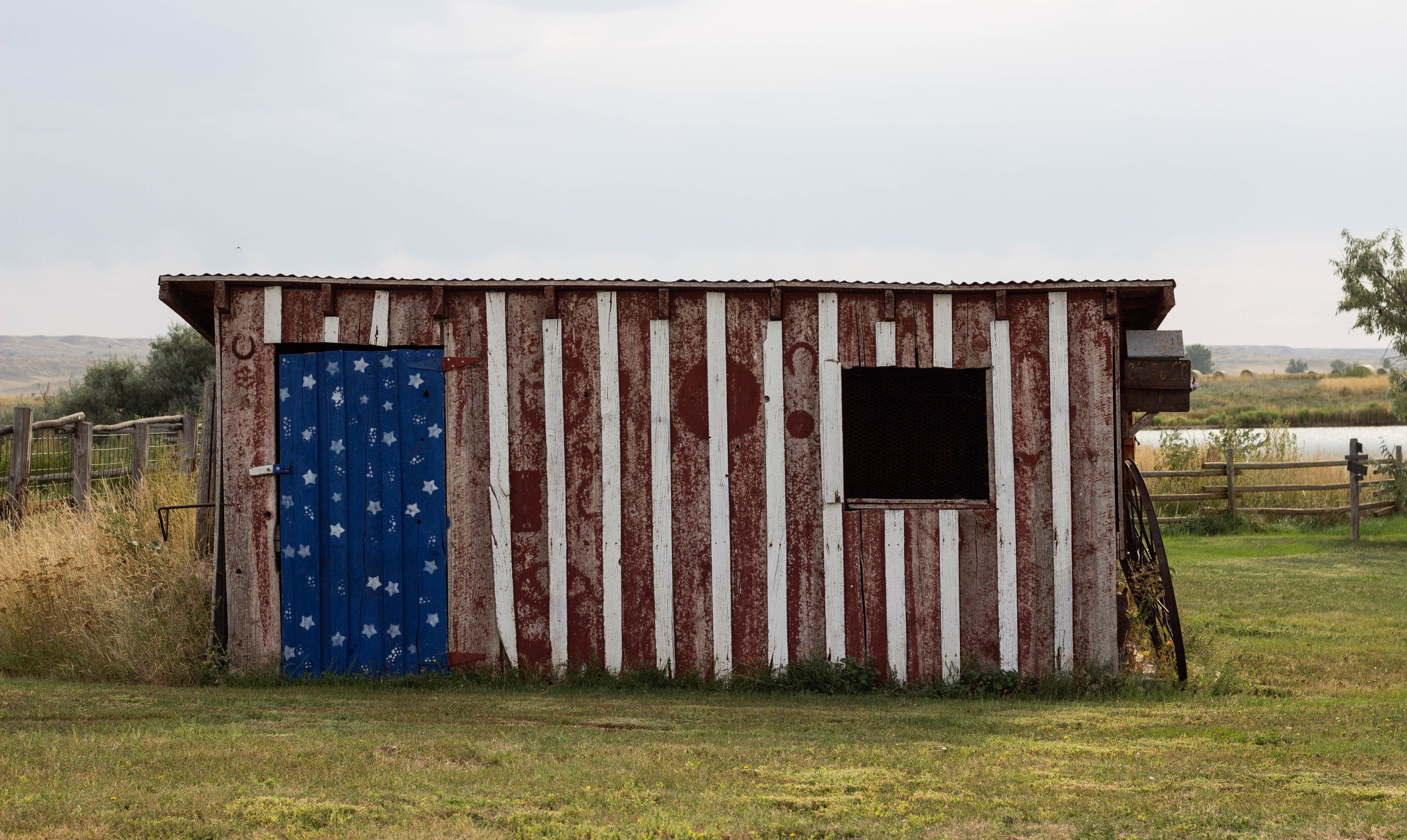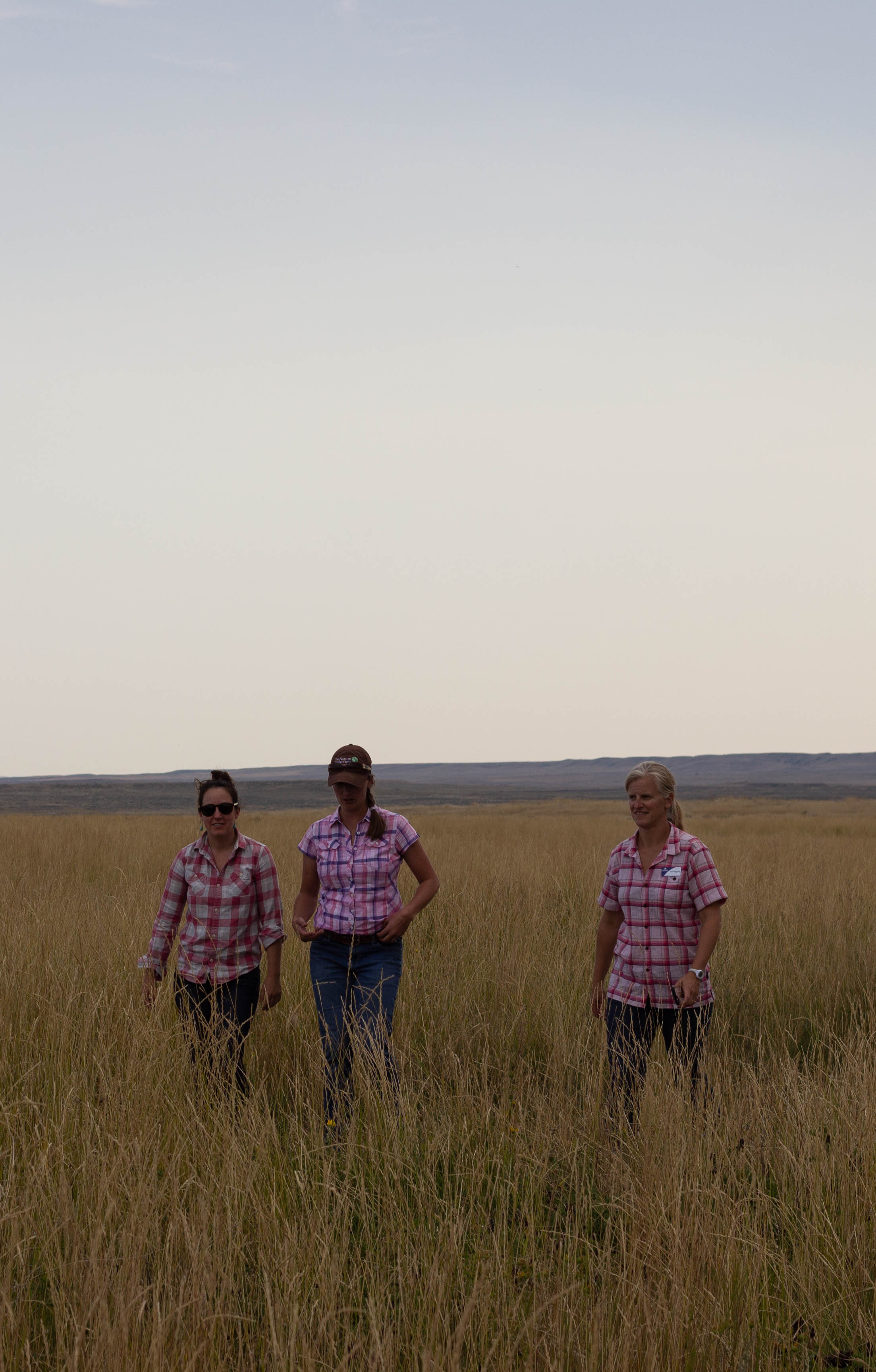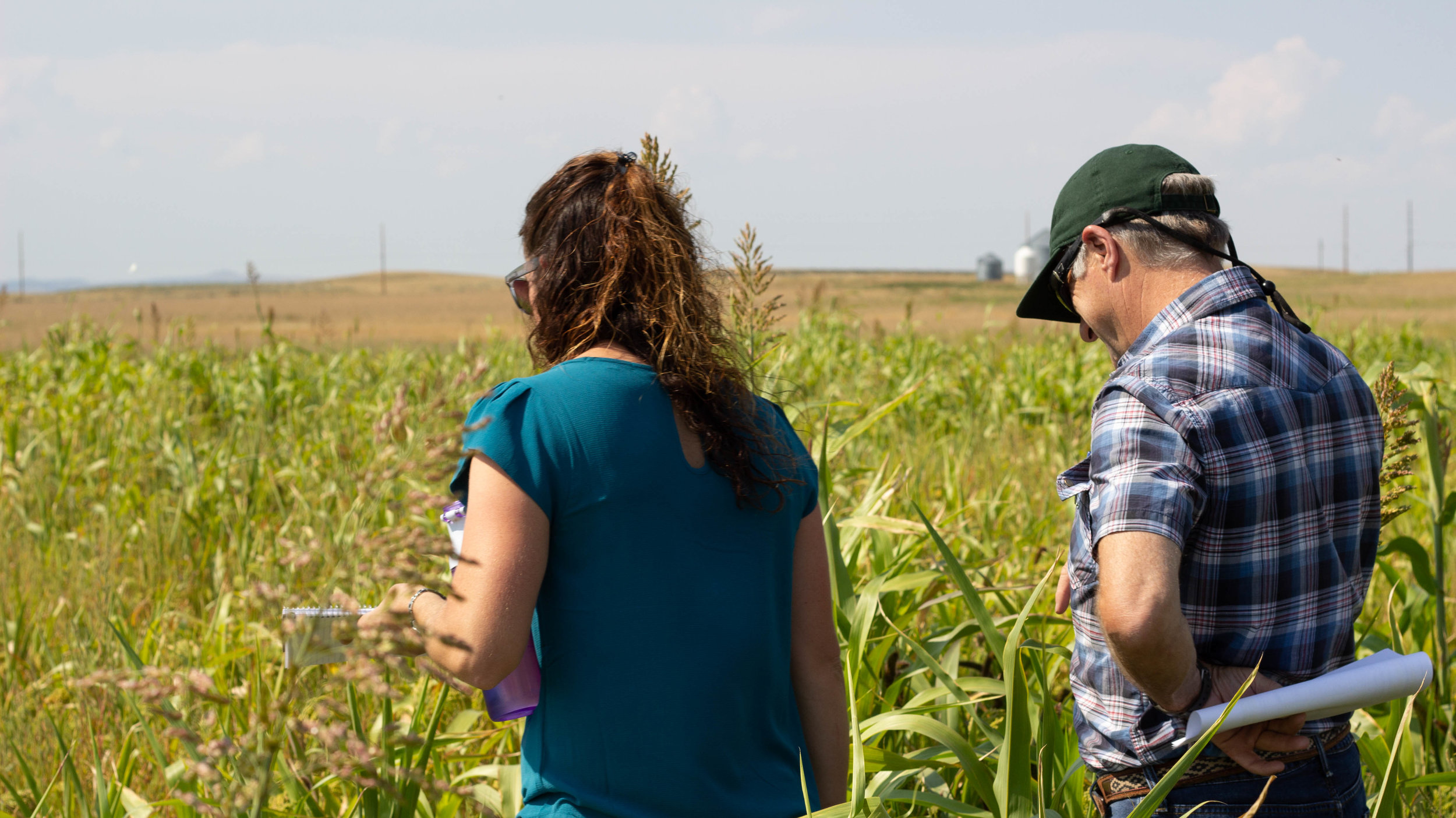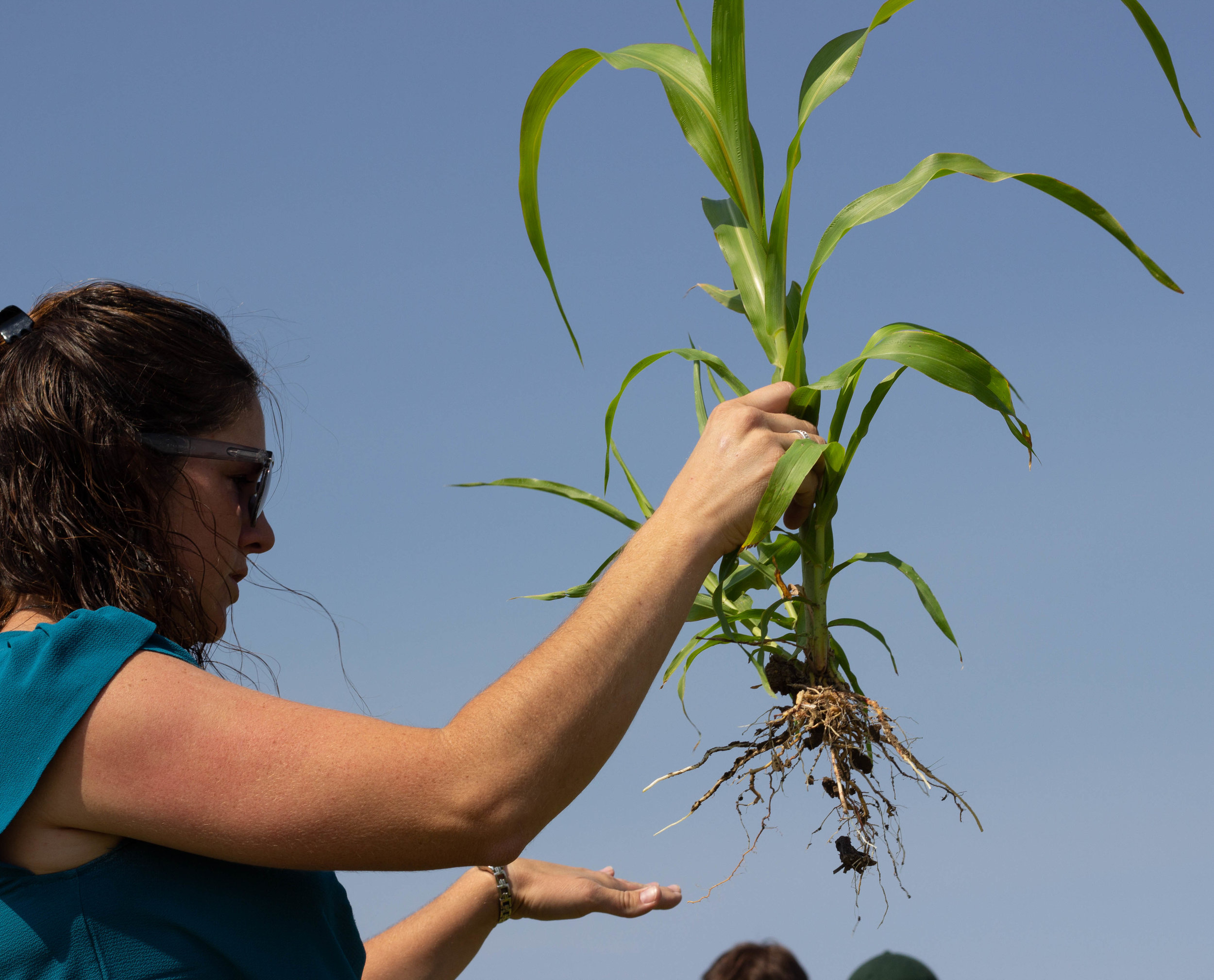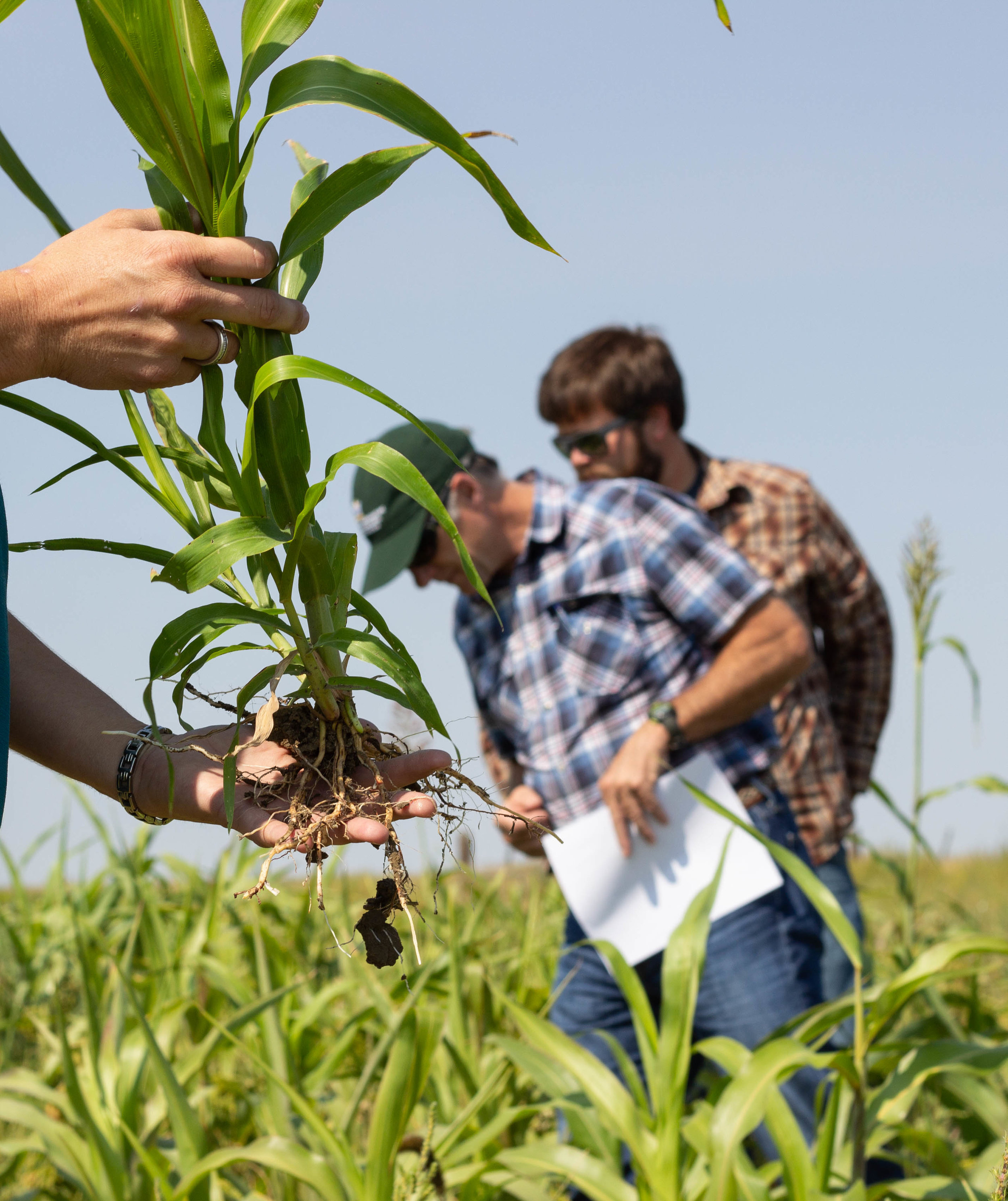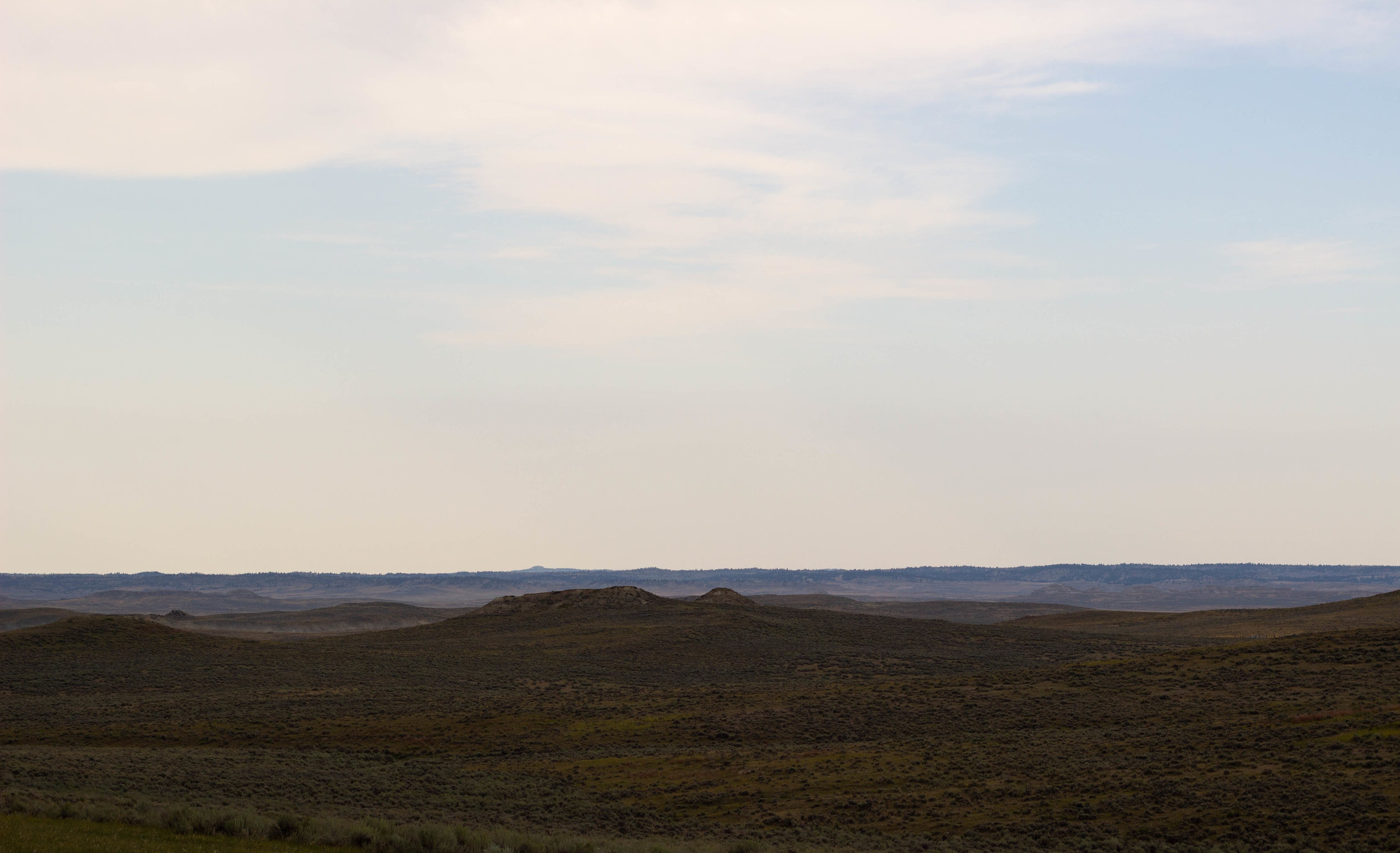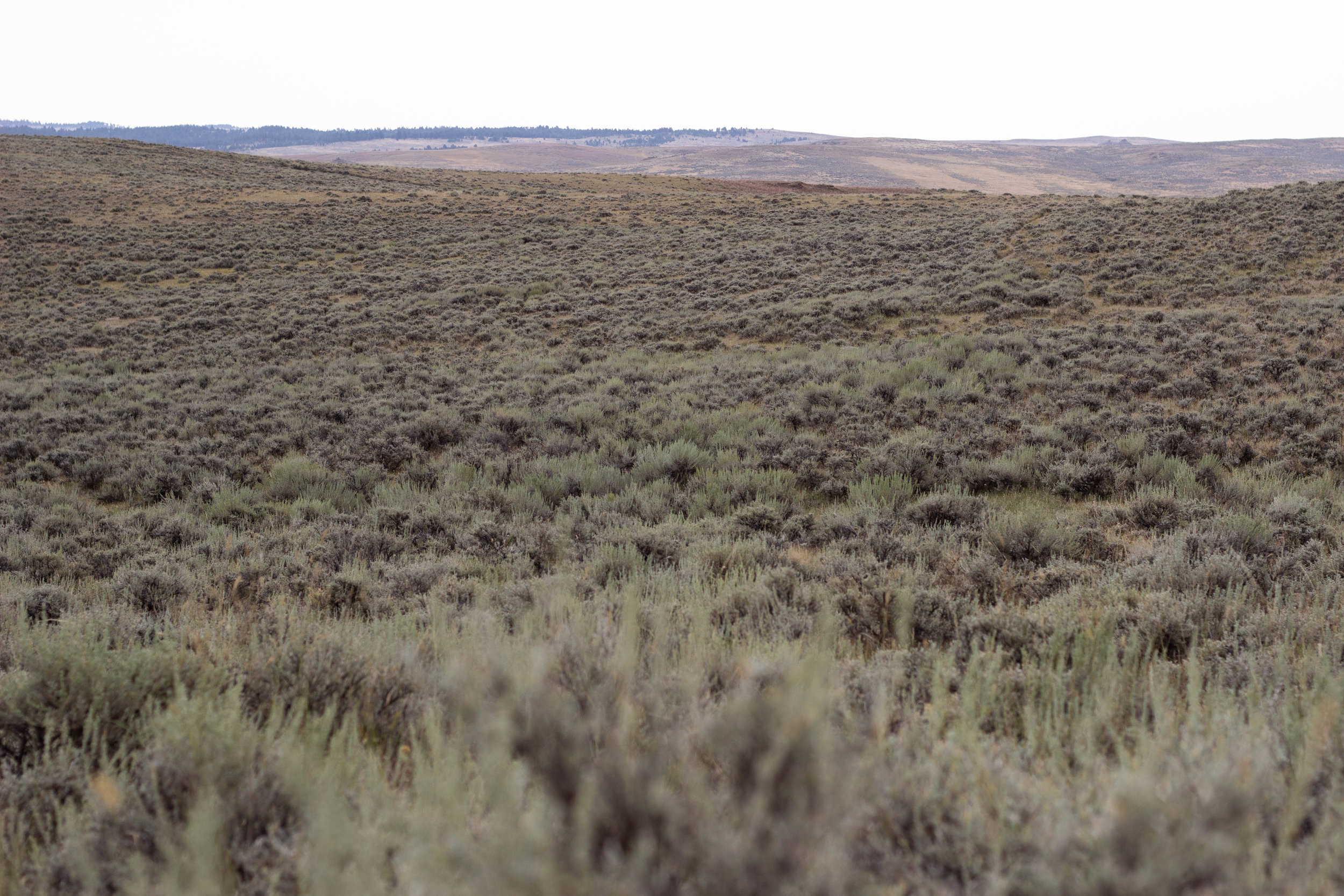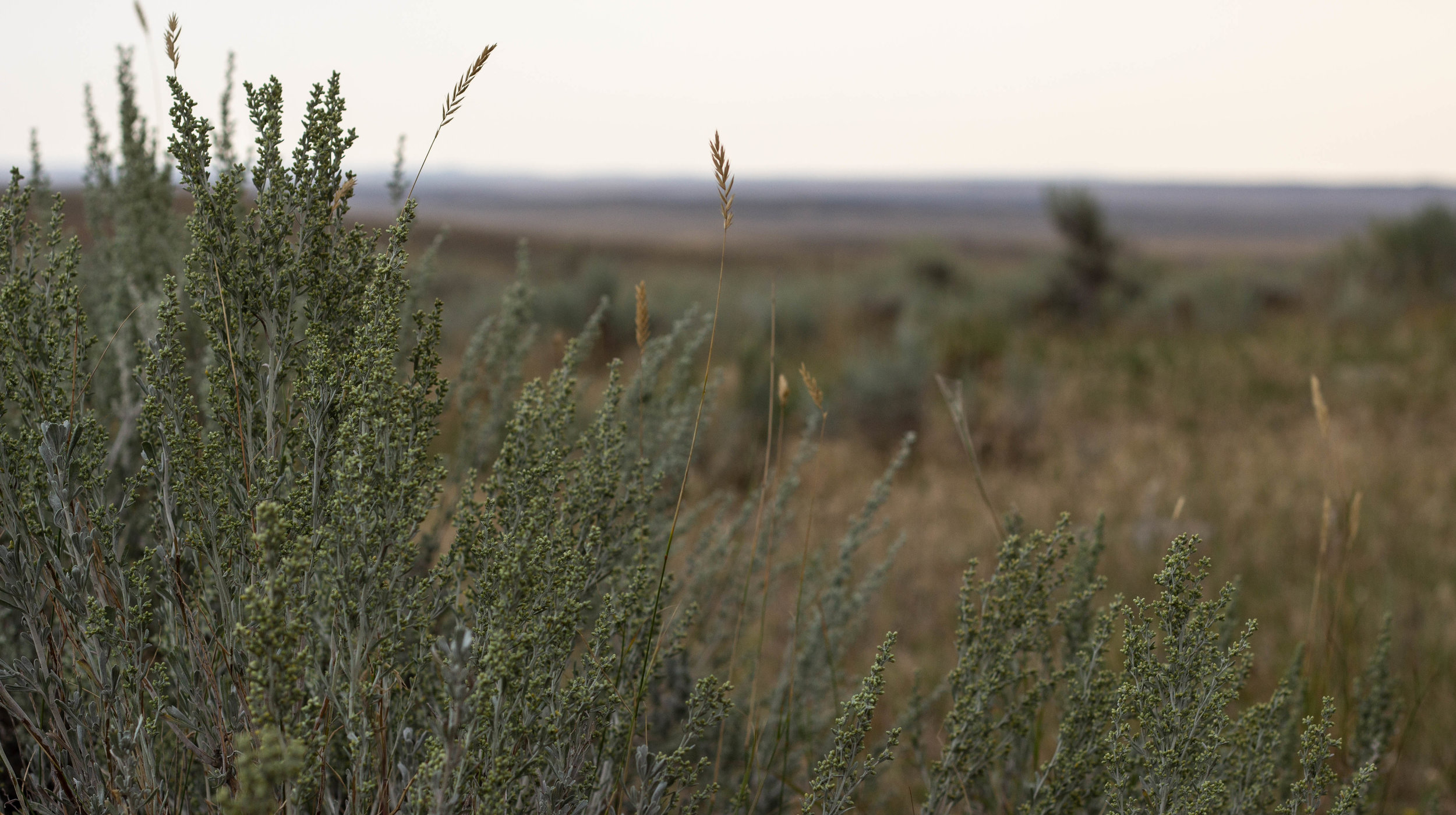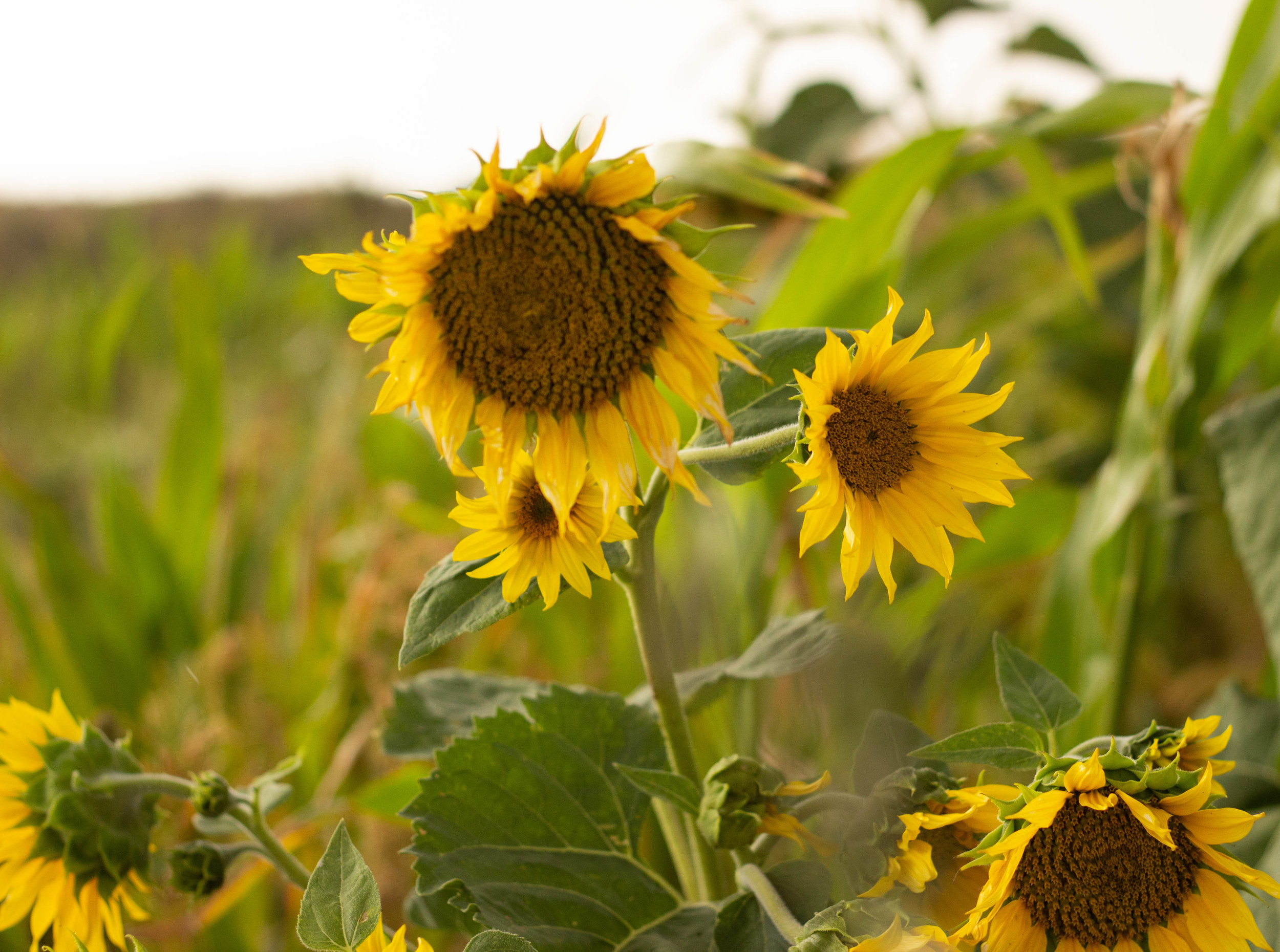On February 1, 2020, Dr. Julia Haggerty was appointed to the Interim Director position for Montana Institute on Ecosystems (IoE). Dr. Haggerty’s leadership role begins immediately and will run through June 30, 2022 (i.e., 18-mo appointment). This timeframe was selected to allow for additional time to get through challenges with ongoing COVID uncertainties, and to cultivate a long term strategy for IoE funding and leadership. Over the next 18-months Dr. Haggerty will work to foster growth and impact IoE research and scholarship, as well as help to find creative strategies for supporting the outreach and curricular excellence within the Institute. Congratulations to Dr. Haggerty and the IoE!
From Big Sky Country to the Land of Enchantment: Coal policies are all over the map
A new study in the Journal of Energy Policy from Montana State University offers a synopsis of federal and state energy transition policies, focused on the impacts on the people who live in rural coal communities in six Western states. By examining the policies addressing impacts of the declining coal industry in Arizona, Colorado, Montana, New Mexico, Washington, and Wyoming, the study authors found that:
1. The lack of comprehensive federal energy policy exacerbates uncertainty and challenges planning efforts in coal-dependent communities.
2. State policies vary widely–some encourage the energy transition away from coal, while others resist or prevent the coal transition by bolstering the coal industry.
3. Existing transition assistance programs do not adequately address the needs and capacity of remote isolated communities.
Taken together, these findings help to inform the search for policy that effectively addresses the needs of workers and resource-dependent communities in the energy transition.
Policies that confirm and establish a clear timeline for transition are critical to set the stage for productive community engagement – ideally, an adequate heads-up allows time to prepare for workforce and revenue impacts. For example, in Centralia, Wash., labor stakeholders negotiated the timelines of closure in order to plan and to think about the redirection of their workforce. In contrast, where state efforts have focused on efforts to postpone decline, communities are less likely to plan and end up more exposed to unexpected closures and layoffs.
Across the board, lacking plans to mitigate the impacts of revenue loss, local governments are headed toward a fiscal crisis. This is a critical missing piece of existing assistance programs. In an interview, an economic development practitioner who works for a regional development district describes how this reality affects community stakeholders’ willingness to discuss aspects of transition: “They [would] sit in a room and start talking about transitioning economies, that there’s not a direct replacement [for what is lost]… I think that the backfill of revenue support to communities is the piece that we have not figured out well on any level. If we could figure that out, communities would be much more willing to transition.”
Our interviews also revealed the limits of existing assistance policies, observing that federal assistance to coal communities has so far failed to address the needs of remote isolated communities. Not only do existing programs fail to embrace the fundamental challenge of transition in resource peripheries--the lack of obvious development options to replace the coal-based tax revenue, economic base activity, and employment--they also put an enormous burden on local actors who lack the resources and authority to implement meaningful solutions to local issues and often do not technically qualify for assistance. Furthermore, access to assistance is hampered by administrative rules that are out of step with the nature of transition impacts. As one interviewee quoted in the paper put it: “We have [a] community that was one of the most impacted by the closure of the coal mines, but they didn’t qualify for opportunities now, because their wages had not decreased during the time in which they were doing the consideration… That’s one of the challenges… They’re not always qualified to start the planning process.”
Opportunities to improve policy to address the coal transition:
As federal and state policies evolve, and as private actors like investor-owned utilities consider their responsibilities to coal communities, our study provides some actionable advice.
Federal energy policy that establishes clear timelines and strategies for transition is necessary to eliminate the uncertainty that currently undermines motivation and capacity for planning. Utilities and their regulators also have a role to play in clarifying retirement timelines for coal-dependent communities.
Federal and state policy can mandate, support, and implement comprehensive assessment of impacts of closure to identify cumulative impacts and local vulnerabilities, working with local and industry stakeholders to identify locally-appropriate strategies to mitigate social, economic, and environmental impacts of closure.
Expanding federal, state, and industry assistance programs in scope and scale will help to deliver sustained, predictable funding for assistance programs and significant reinvestment opportunities in impacted communities and regions. More flexibility is needed in how grant programs can be used to better meet the needs of vulnerable communities (i.e., allow access to programs before closures are officially announced).
Limited capacity and weak ties to state and federal actors currently impede meaningful transition planning. Political and industry decision-makers can facilitate and support coordinated regional planning that integrates energy system and economic development considerations.
States need to consider reforming fiscal policy to remove barriers to saving revenue and expand the range of tools that enable communities to unwind fiscal dependence on coal revenue.
ARTICLE
Kelli F. Roemer, Julia H. Haggerty, Coal communities and the U.S. energy transition: A policy corridors assessment. Energy Policy, Volume 151, 2021, 112112, ISSN 0301-4215.
https://www.sciencedirect.com/science/article/pii/S0301421520308235
Contacts:
Kelli Roemer: kelli.roemer@montana.edu (208) 731-2444
Julia Haggerty: Julia.haggerty@montana.edu (406) 600-1766
View of the Colstrip Steam Electric Station from the lawn of the Colstrip recreation center and pool. June 5, 2019.
Extended engagement with people and place motivates interdisciplinary reflection about the future of conservation in central MT
A new study in Ecology and Society from a multidisciplinary team of researchers from Montana State University assesses factors influencing the future of rangeland conservation in Montana’s portion of the Northern Great Plains (NGP). One of the world’s last remaining intact, native rangelands, the NGP supports habitat for a rich diversity of wildlife and range-based livelihoods. The region’s global status as a priority target for conservation has motivated fervent interest in various conservation approaches and strategies, including a well-known protected area project called the American Prairie Reserve.
Conservation strategies like protected area projects seek to respond to global demands to halt biodiversity loss in grassland ecosystems with speed and efficiency. However, the authors question what gets lost when a ‘sense of urgency’ guides conservation approaches. Past research emphasizes how more deliberate and often slower conservation strategies are necessary to address the complexity of the region's social and ecological dynamics and build engagement across the region’s conservation stakeholders and rural communities to meet and sustain conservation goals. The author team argues that examining these tradeoffs - between urgent and more deliberate conservation approaches - is critical to assessing the long-term outcomes of conservation agendas.
To disentangle the important factors at play influencing conservation outcomes in the Northern Great Plains, the author team took a participatory approach. Over three years, the author team engaged with regional stakeholders through speaker series and extended field tours to learn about the key issues facing rural communities and rangeland ecosystems in central MT. These efforts included hearing from experts like Quentin Kujala of the Montana Department of Fish Wildlife and Parks about the concerns of the region’s wildlife, as well tours of working ranch operations in and around central Montana, a tour of properties affected by the 2018 Lodgepole fire, and an overnight stay at one of the American Prairie Reserve’s campgrounds and interpretive facilities. “We formed the Montana State University Grasslands Resilience Working Group to create a space on campus for graduate students and faculty to come together around shared interests in rangeland conservation,” says Katie Epstein, lead author on the study. “Engaging with and learning from the people and communities invested in rangeland conservation was key to creating an evolving research design and approach that could incorporate regional perspectives.”
The study examines three important dynamics relevant to the future of conservation: changing climate and disturbance regimes, changing land-use patterns, and the influence of land use on biodiversity outcomes. Graduate students in the Working Group led a focused literature review effort to summarize key insights from the current state of knowledge and highlight gaps in understanding, identifying what the group called “certain uncertainties.” How will fire and climate interact to produce land cover in the region? How will shifts in land ownership influence land use, and what adaptive management practices can best support the region's diverse rangeland habitats? Managing these uncertainties at the regional scale necessitates deliberate and coordinated approaches, which often require coalition and trust-building but can also be time-consuming and resource intensive. Yet, the author team argues that a slower approach to conservation, one that engages with regional stakeholders, invites collaborative dialogue around the future of the region and its conservation goals, is critical to meeting conservation objectives and sustaining them into the future.
More than just an academic exercise, the Working Group argues that their research takes an engaged approach to interdisciplinary learning and graduate education seriously. A truly grassroots enterprise, the Grasslands Resilience Working Group and their regional assessment of conservation attempt first and foremost to embody the university’s land grant mission, to serve both people and ecosystems of Montana.
Citation: Epstein, K., D. J. A. Wood, K. Roemer, B. Currey, H. Duff, J. D. Gay, H. Goemann, S. Loewen, M. C. Milligan, J. A. F. Wendt, E. Jack Brookshire, B. D. Maxwell, L. McNew, D. B. McWethy, P. C. Stoy, and J. H. Haggerty. 2021. Toward an urgent yet deliberate conservation strategy: sustaining social-ecological systems in rangelands of the Northern Great Plains, Montana. Ecology and Society 26(1):10.
https://doi.org/10.5751/ES-12141-260110
A Special Celebration for 4 RCRG Graduates!
The Resources and Community Research Group (RCRG) is excited to announce four new graduates; Dr. Bills Walsh, Dr. Epstein, Dr. Smith, and Jackson Rose, MSc. These four students have worked extremely hard to accomplish and earn the following degrees.
Dr. Katie Bills Walsh has earned a PhD in Earth Sciences and Geography studying Coalbed Methane Reclamation Activities in the Powder River Basin, Wyoming. Dr. Katie Epstein earned a PhD in Ecology and Environmental Science focusing her research on The Amenity Transition and Elk Management in the Greater Yellowstone. Dr. Kris Smith earned a PhD in Earth Science and Geography studying Opportunities & Resilience Traps at the Energy-Agriculture Nexus in the Bakken Shale Play of Montana and North Dakota. Jackson Rose has earned his masters in Earth Sciences- Geography based on his research on the role of community benefits agreements in negotiating rural development and modern mineral mining. On November 18, 2020, Dr. Julia Haggerty addressed the graduates with the following commencement speech.
I would like to address our graduates now, with the single goal of honoring you and your hard work and accomplishments. Dr. Bills Walsh, Dr. Epstein, Dr. Smith, and Jackson Rose, MSc., congratulations.
My remarks are organized around two fundamental principles of our research collaboration, the RCRG.
First, this celebration is fundamentally about the joy and opportunity possible in a life devoted to insight. There is no single endpoint at which “insight” is achieved – insight is a practice that insists on continual learning and reflection. It is the act of refusing opacity, or at least, relentlessly chipping away at it.
Scholars, like the four we celebrate today, are the people for whom insight is life-sustaining. Figuring something out makes our heart race: it energizes us. Landing upon a way to communicate our insights effectively to our students and readers makes our hearts soar: it gives us joy.
Insight is our vocation.
Each of you is responsible for a body of work that offers new and original insights at the nexus of livelihoods, natural resources, place and governance—discoveries and analysis that would not exist if it were not for your curiosity, creativity and determination.
At this ceremony, we honor the generation of 3 doctoral dissertations and a master’s thesis. Each is a major piece of scholarship and together they provide original answers to two profoundly important and relevant questions:
Katie B, Kris and Jackson, your work asks:
· Whether and how the residents and local governments of places that host natural resource development can bend those industries to fit local priorities? You help us to know and see what the outcomes of that very difficult struggle looks like from the perspective of local environments, livelihoods, and the human and physical infrastructure from which regional futures will evolve.
Katie E’s work asks:
· What it means when rural regions are the solution to the problem of the need for meaning, status and identity on the part of those few individuals who control the vast sums of surplus capital enabled in our present political economy? How does the acquisition of property by the super rich shape environments, livelihoods, and the institutions that mediate among them?
For this audience, there is no need to state the obvious importance of these questions.
But in case your parents and families wonder why their talented student ended up in this faraway periphery studying in the oil fields, copper mines and ranches of America, let me say this:
· You may live in a post-industrial economy that makes the work of resource extraction easy to ignore—a world that engenders an illusion that our iPhones drops out of some cyborg womb fully formed. But resources are absolutely fundamental to our survival—humanity will never be free of resource production. If we can’t generate natural resources in ways that minimize damage to people and place, society self-destructs—if not materially, then certainly morally. Dr Bills, Dr. Smith, and Jackson Rose MSc are doing work that is fundamentally about avoiding societal self-destruction. It’s that important.
· The economy, is it often said, it the resources of a society, and how they are allocated. The allocation of rural property—an entity which is in itself laced with the legacies of conquest--is reaching untenable levels of inequality. The desires and whims of the .01% ripple across rural landscapes around the world at an increasing pace, leaving behind a world of elaborate gates and no trespassing signs. The super rich turn their money over, more or less tax free, in Montana’s real estate. Some may leave a landscape richer in terms of biodiversity in exchange for that profit, but most are eroding what was already a tenuously-held public commons—and as Katie’s work has shown, our public servants and the residents of rural landscapes shoulder the burden of managing the conflicts the loss of this commons creates.
My wish for all four of you is that you remain devoted to insight in all aspects of your life—demand it of yourself, your students, your friends and family, leaders of institutions that shape your world. Consider it your life’s purpose to craft warm and enticing invitations to the practice of insight.
What makes me most proud is that these insights have been made with a clear devotion to the places and people you have studied. As analytical and rich as your work is, it is free of clever critical riffs made for the sake of an ‘academic solo’ and recognition from academia’s in crowd. Indeed, your work is in fact harder to generate because of your commitment to what Kristin has so aptly called critical empathy, which means striving for authentic and genuine reporting on the good, the bad, and the ugly in ways that, again, invite rather than shut off insight in as many audiences as possible.
Empathy links closely to RCRG’s second fundamental value, interdependence.
Each of you has allowed yourself to ask for and receive help—help from your colleagues and teachers in the Department of ES and MSU, your research partners, your funders, your teachers, your families. These projects and your success, then, belong as much to your emotional and intellectual ecosystems as they do to you. We are creating a giant mural of gratitude on our whiteboard inside--in which these students attempt to name every person to whom they owe thanks--and when it is finished today, we will share it with as many of those people as we can. If you are here with us, you can be sure your name is on that board!
Jackson, Katie E, Katie B, and Kris, you four have also modeled and established an incredibly high standard of selflessness and collaboration as you have built the RCRG enterprise. Pretty much every time I see another faculty member in my department they go out of their way to say, and I quote: “Your students are just so awesome.” And by that they are referring not just to your excellent scholarship, but to your leadership as scholars who are building a better institution. In the many ways you help each other and our department and university communities, you are actively dispelling the damaging, oppressive patriarchal ideas that hold the academy back – replacing them with models of mutual aid and collaboration that are in the true spirit of the land grant institution. Thank you for doing this.
My hope for RCRG has been that it will personify Robert Frost’s silken tent—a tent in the sense of providing hearth and shelter for scholars. And more specifically like Frost’s tent in being a place that “loosely bound by countless silken ties of love and thought to every thing on the earth” – today I honor you as a group of incredible women and men who have erected this tent, and filled it with possibility.
Go forth and prosper.
Navigating the Local Costs and Benefits of Modern Mineral Mines: The Role of Non-Regulatory Agreements
by Jackson Rose
In Spring 2016, a mining project in central Montana was generating controversy and heated debate around the state. At the time, the Black Butte Copper Project was a proposed underground copper mine located in Meagher County about fifteen miles north of White Sulphur Springs, a rural community with less than a thousand residents. At the heart of the conflict around the project was a recurring question that sparked my interest: does natural resource development create sustainable rural community development?
Two years later, as a Master’s student at Montana State University, I was still pondering that question. Around this time, I was offered the unique opportunity to get directly involved with the Black Butte Copper Project through a local stakeholder group called the Meagher County Stewardship Council. The Stewardship Council wanted our research group to provide resources, expertise, and advice designed to help them capitalize on the impending development. I used this opportunity to shape a thesis looking at the cost/benefit equation facing rural communities that host an emerging and highly relevant type of mining development: short-duration, high-impact underground mines.
So, what did I learn?
First, rural communities that host mining projects are increasingly turning towards non-regulatory agreements to both mitigate short-term impacts and realize long-term benefits tied to these projects. These agreements typically go above and beyond regulatory requirements and are negotiated directly with the project developer.
Second, community concerns and priorities tied to mining developments are contested spaces with multiple stakeholder groups involved. Outside of environmental groups, many stakeholders in rural communities are focused on the short-term benefits provided by a potential mine. The desire for a boost to the local tax base and high-paying jobs often comprises the ‘wish-list’ of these groups and may complicate the need to negotiate for fiscal and social impact mitigation. Ideally, communities are able to assess the regulatory gaps in the regulatory and institutional frameworks around hard-rock mining and incorporate formal initiatives into non-regulatory agreements to cover those gaps. However, my research suggests that communities may be unwilling or unable to assess and address regulatory limitations.
Thirdly, negotiations between rural communities and mining companies are further complicated by the reality that the most influential stakeholder groups are often environmental/conservation organizations with significant legal, policy, and economic expertise. These groups often hold leverage during the crucial stages of the permitting process, when mining companies are seeking a ‘social license to operate’ or local acceptance and approval of a project. Conservation groups exercise this leverage via the threat of litigation, which results in their priorities (and a large share of a limited resource pool) ending up in formal agreements. While these groups often include locals, their ability to represent the broader community is in question.
Taken together, these findings help explain why certain priorities, specifically long-term community development concerns, are not always formalized in non-regulatory agreements. When they are present, evidence suggests that community development initiatives are often limited in scope and heavily front-loaded, leaving their long-term sustainability in doubt. Importantly, my research does not suggest that the institutional and regulatory environment might limit rural communities’ ability to secure enduring benefits. Pressure to secure a social license to operate appears to exist even in strong regulatory environments. This pressure creates opportunities that communities can and should exploit to capitalize on natural resource developments.
The question of whether or not natural resource projects lead to sustainable rural community development is not going away. In the West, rural places like White Sulphur Springs continue to host large-scale industrial developments with no guarantee of lasting socioeconomic benefits. I believe that non-regulatory agreements offer a unique mechanism for rural places to secure these benefits and ensure positive outcomes for future generations.
Water infrastructure: finding the interesting in the boring
by Grete Gansauer
You never notice everyday objects like faucets, drains, spigots, and fire hydrants until you read academic articles about them until your eyes water. And then, like a physical sarcastic joke, you start seeing these things almost as often as you’ve read the words on the page. Infrastructure surrounds us, all the time, and goes humbly unnoticed until it is broken, leaking, or out-of service. It is, after all, infrastructure - unseen elements meant to facilitate modern economic life without friction. Although the presence of built infrastructure seems unremarkable, the processes by which it enters our world are markedly the opposite.
Built infrastructure is surprisingly interesting. Once you see the invisible prowess of streets, telephone lines, and underground water pipes you’ll never be able to ‘unsee’ the unsung impact they have on our day-to-day reality. Suddenly, a flush toilet becomes an opportunity to consider ‘modern life’. Water flowing from a tap urges you to consider how much effort it really takes for H 2O to appear to flow effortlessly into billions of homes around the globe. And a road raises questions about political boundaries: who owns this road, anyway? Infrastructures are great feats of human ingenuity, but these technologies often create political and social outcomes beyond their intended use, which fascinates academics.
Lest you think infrastructure researchers are all engineers, we span a variety of social science disciplines including science and technology studies, geography, anthropology, urban (and rural!) planning, and political science. We are united because we have discovered a great secret, a clandestinely juicy topic cloaked in the guise of normalcy. In particular, infrastructure geographers are concerned with the ways that these large-scale technologies take shape over space and time. Where do they start and where do they end? Who built the thing? Why? And a recurring theme, how the heck are they going to pay for the maintenance?
Answers to these questions are often quite nuanced. For example, this summer I am researching transbasin rural water systems in the Western US. Geographies of these regional water transport pipelines are larger than one might expect, sometimes covering hundreds of miles of mountainous terrain (an attribute which becomes quite expensive when heavy water must be piped uphill). Those of us living in the arid West might not feel that regional water pipelines are particularly out-of-place, however, my research thus far indicates that the scale and number of these projects in the Western US is nearly unmatched elsewhere on the globe. (Aside from, predictably, China, where a 2,700-mile long water pipeline is under construction.)
Regional water systems are envisioned by their proponents as a solution to both water quantity and water quality challenges, and as an opportunity for small rural communities to pool their investments into one big water system. Some tout such pipelines as critical to local economic development. However, large water systems are extremely costly, and they pose governance difficulties as they traverse and connect several jurisdictions. My research explores these emerging geographies of rural water resources, and critically examines regional infrastructure solutions to water management. Thankfully, I find it deeply interesting. I never would have guessed I would be so intrigued by big, ugly, underground pipelines, but now I see there is more to infrastructure than meets the eye.
Building Resilience in Coal Country
by Kelli Roemer
Earlier this month, I was invited by the Dakota Resource Council to speak at a public forum called, “Building Resilience in Coal Country,” in Beulah, North Dakota. To an audience of county commissioners, community leaders, stakeholders, and community members, I presented research findings from a collaborative research effort between Montana State University and Headwaters Economics that examines how coal-reliant communities in the U.S. West are planning for the impacts of plant or mine closure. One of the biggest challenges facing coal-reliant communities is how to replace lost tax and royalty revenue after the coal plant or mine closes. Recent research on economic transitions calls for strategies that stabilize budgets, build dedicated transition funds, and tie the revenue to specific goals that support diversification and are appropriate to the local context. In addition, I shared lessons from previous RCRG research about the critical role of local institutions and the process of planning to rural community resilience in energy communities. Specifically, an example of Richland County’s planning process to coordinate local responses to emerging concerns related to rapid increase in oil and gas development.
My presentation was followed by Jack Morgan from the National Association of Counties (NACo), who has been working in coal-reliant communities across the United States, and then a facilitated conversation about next steps for the community in terms of addressing their community’s future.
Big thank you to Dakota Resource Council and the community of Beulah, North Dakota for hosting us and letting us share our work with you!
Humility matters
when it comes to living and working in (and studying) grasslands. Humor and patience seem to help a lot too.
Grasslands Collaboration 101
credit: Kelli Roemer
The second annual field tour of the Grassland Resilience Working Group focused on community stewardship and development projects in Central Montana. We had the incredible fortune of assembling a group of 24 MSU faculty and graduate students (and friends) who took time away from classes, writing and family to travel 724 miles in 3 days. In those three days, we visited five exemplary sites thanks to the generosity and hospitality of hosts from the Kilby Butte Colony, Lower Musselshell Conservation District, Winnett ACES, The Nature Conservancy Matador Ranch, Ranchers Stewardship Alliance, and the American Prairie Reserve. We are especially humbled by the residents of the region who opened their ranches and homes to feed and shelter us, and made space in their schedules for long, genuine exchanges in the spirit of shared learning and understanding.
We take these tours so that we can be better interdisciplinary scholars of range and grassland issues in our region. To me, being better means striving to be more creative and critical in our thinking at the same time we push ourselves to be relevant and useful to stakeholders. To get better, we have to nurture comaraderie, inspiration from the landscape and its people, and time to think and discuss. There is no better vehicle for all of these things than hitting the road for three days in central Montana.
Our conversations and visits covered lots of ground (literally!)—too much to summarize here—but it struck me looking at our photos that our visiting expert, Dr. Nathan Sayre of the University of California Berkeley Geography Program, provided a useful summary, not only of his talk, but of key takeaways from our trip with this slide:
You can learn more about the book upon which this lecture is based, The Politics of Scale, by reading it —or cheating and listening to this great interview on the Art of the Range podcast.
This trip affirmed my belief that when respect, humor and humility are ground rules for engagement, this context increases the opportunities for the creativity and collaboration that we know are essential to the long-term resilience of regions like the Northern Great Plains. This is true not just for community enterprise, but scholarship as well.
Please enjoy the photos below, the better ones taken by Kelli Roemer and Eric Sproles. Clicking on the photo will open it in a standalone window.
Peer-to-Peer Workshop in White Sulphur Springs, MT
Earlier this summer, I had the opportunity to attend and support a unique community event in White Sulphur Springs, Montana. This event was hosted by the Meagher County Stewardship Council, a local community group that formed in response to the potential development of a nearby large-scale underground copper mine called the Black Butte Copper Project. The Council’s mission focuses on protecting the long-term cultural, economic, and environmental interests of county residents. In support of this mission, the Council decided to invite community leaders from three mining communities—Marquette, MI; Jefferson County, MT; and Stillwater County, MT—for a two-day “peer-to-peer” workshop.
The peer workshop was firstly a chance for the invited guests to get a glimpse of the life and history of White Sulphur Springs and Meagher County. To enable this, the Council organized a tour of the community, surrounding area (including the potential mine site), and local businesses. This included discussions with community leaders in White Sulphur Springs around upcoming challenges and opportunities associated with hosting large-scale industrial projects. Following the tour, the Council organized a town hall event in which the invited guests formed a panel to share their insights and experiences around underground mining. This event allowed city and county residents to hear the real-life lessons from their peers in similar communities. The panel session was a facilitated discussion that was followed by a question and answer session where attendees could voice comments and concerns. By all accounts, the event was a huge success and resulted in a strong turnout from the community.
The day after the town hall, the Council held a meeting with the invitees and leaders in local government. This meeting was geared towards furthering the discussion and digging into the feedback given at the town hall. This allowed Council members the opportunity to explore ideas and suggestions they hope will form the foundation for a Community Benefits Agreement between the Council and Sandfire Resources America. Community Benefit Agreements are legal contracts between communities and mining companies with the goal of securing long-term benefits to those communities related to natural resource development.
Overall, the peer-to-peer workshop was a rare opportunity for community members to share knowledge and ideas around hosting mining projects. As part of our work in resource communities throughout the Western U.S., RCRG was thrilled to have the chance to help coordinate this event and continues to support the Council as they move forward. Below are a few photo highlights from the two days.
Members of the White Sulphur Springs community and Meagher County gathered to hear the speakers talk about their experiences hosting underground mining.
The tour of the White Sulphur area included stops at prominent local businesses. Above, the speakers and Council members chat over a beer at 2 Basset Brewery.
The community tour also stopped at the site of the Black Butte Copper Project (at the core sheds above).
Kelli and I seized the opportunity to add to our hard hat photo album, with Black Butte in the background.
AAG 2019 – Washington, DC
The Resources and Community Research Group made a strong showing at the recent AAG annual meeting in Washington, DC. Five members presented their research on diverse topics:
PhD candidate Kelli Roemer won the RGSG Student Poster Competition for her poster entitled “Exploring rural resilience pathways for transitioning coal communities in the U.S. West” (abstract here). This research uses community resilience and transition theory framework to investigate characteristics and processes that encourage or limit community-level transition planning in the context of U.S. communities impacted by a coal-fired power plant closure.
(From left to right) Julia Haggerty, Katie Bills Walsh, Kelli Roemer, Katie Epstein, and Kristin K. Smith
PhD student Katie Epstein’s paper, “(Re)assembling rangelands” (abstract here), explores how high net worth landowners have become highly influential actors in the contested sustainability transitions playing out in rural places.
Graduate student Jackson Rose and MSU professor Julia Haggerty presented a poster entitled “Resource Communities and Community Benefit Agreements: Securing Long-Term Benefits From Short-Term Extractive Projects” (abstract here). The poster reports on work to support a rural community (White Sulphur Springs in Central Montana) as it tries to navigate the negotiation of a Community Benefit Agreement with an international mining company.
Jackson Rose
PhD candidate Katie Bills Walsh presented the paper “I’d do it again in a heartbeat: Coalbed methane development and satisfied surface owners in Sheridan County, Wyoming” (abstract here). This work investigates the phenomenon of landowner acceptance and satisfaction with development, specifically among a group of split estate surface owners who hosted coalbed methane development (CBM) during the 1998–2008 CBM rush in Wyoming’s Powder River Basin.
“Taking the road less traveled: The work of roads in energy impact geographies” (abstract here), a paper by PhD candidate Kristin K. Smith and MSU professor Julia Haggerty, explores the ambiguous effects of extensive investment in road infrastructure related to the Bakken shale play in western North Dakota and eastern Montana.
Julia Haggerty & Adrianne Kroepsch (Colorado School of Mines) shared the Professional Geographer award from the AAG's Energy & Environment Specialty Group for their paper “Geographies of Impact and the Impacts of Geography: Unconventional Oil and Gas in the American West” (paper here).
Julia Haggerty and Adrianne Kroepsch accepting the award on behalf of the author team, which included graduate students Kristin Smith and Katie Bills Walsh as well as MSU Earth Sciences professor David Bowen
IAIA 2019 - Brisbane, Australia
Earlier this month, Jackson and I had the great opportunity to attend the International Association of Impact Assessment (IAIA) 2019 Annual Conference in Brisbane, Australia. IAIA is a network of researchers, practitioners, and professionals who conduct or utilize impact assessments (IAs) in a variety of contexts worldwide. IAs aim to identify future consequences of a current or proposed action—often a development project. Here in the U.S., we’re most familiar with environmental impact assessments (EIAs) that identify anticipated environmental effects of a proposed project and are required under the National Environmental Policy Act (NEPA) of 1969. Social impact assessments (SIAs)—the process of identifying and managing the social consequences of development—emerged as a component of the NEPA process. However, SIA guidelines and principles were first developed internationally as a study that is part of the regulatory approval process for infrastructure and resource extraction projects (Esteves et al. 2012).
At this conference, we learned about impact assessments in their various forms (social, environmental, health, cumulative, regional) and practices in a wide range of international contexts. Jackson and I were also fortunate enough to participate in a two-day course on SIAs and attended a wide variety of presentations focused on both EIA and SIA. Recent examples of IA in the news include controversy over federal authority around EIAs in Canada and a push for both EIAs and SIAs to be made publicly available in an effort towards transparency by the government of Papua New Guinea.
As graduate students studying rural and resource geography, we are particularly interested in the links between natural resource extraction and community development. SIAs are a unique tool that can aid in offering new insights on the relationship between the mitigation of short-term impacts from natural resource projects and the consequences for post-closure planning. For me, there are exciting new questions about how SIAs can inform community and regional planning for the social impacts of coal-fired power plant and mine closures. For Jackson, SIAs offer up tantalizing new questions on potential outcomes for community development tied to remote mining projects. SIAs are by definition focused on impact mitigation, but they may also present opportunities for rural communities to alter their long-term trajectory. These opportunities are shaped by a multitude of forces including participatory community visioning and community capacity building during the life of mining projects.
In addition to the excellent learning opportunities, IAIA offered a brief visit to the beautiful city of Brisbane. Below are a few highlights of our trip.
—Kelli Roemer and Jackson Rose
The Spectacle and Invisibility of Roads in the Bakken Shale Play
During the fall of 2018, I spent six weeks in western North Dakota collecting preliminary data on a new research project about the role of roads in communities with unconventional oil and gas (UOG) development. Although booms in UOG development often result in significant investments in transportation infrastructure, the scholarship has largely ignored the role that roads can play in either reinforcing or disrupting dependence on natural resource development.
Consequently, road infrastructure prompts contradictory responses – spectacle and invisibility. Traffic and road construction are the some of the most frequently discussed boom impacts by residents and decision makers (Murphey et al 2017). Simultaneously, community members (and researchers) often take for granted the amount of work that goes into constructing and maintaining roads, as well as the environmental, economic, and social impacts of new and upgraded roads (Laurance and Arrea 2017).
I aim to draw attention to this overlooked component of UOG booms. The state, county, and local investments in the road systems throughout the Bakken shale play have been staggering, both financially and in the material changes to the landscape. Roads have created an immense amount of transformation in the Bakken, but exactly how and for whom is an open question that my new research project will explore.
During my time in North Dakota, I interviewed various stakeholders who contribute to shaping the transportation infrastructure in this region. I also spent many hours driving roads, at times with interviewees and at other times by myself. I started carrying county maps with me wherever I went and asking for recommendations about which roads to drive – either to see some of the impacts from UOG development or to explore the twists and turns of the badlands. Below are some of my favorite pictures from my fieldwork.
—Kristin K. Smith, Ph.D. Candidate
Environmental Legacies of Wyoming's Coalbed Methane Boom
My dissertation research focuses on understanding the social and environmental legacies of coalbed methane production in the Powder River Basin, WY. Along with interviewing landowners, regulators, attorneys, and industry personnel, much of my time in the field is spent traveling Wyoming’s dusty dirt roads, surveying the landscape for coalbed methane infrastructure and evidence of reclamation. The images below are exemplary of the scenes that I encounter and study. The combination of exploration in the field and compelling conversation with research participants makes this research both personally rewarding and geographically stimulating!
RCRG PhD Student Kristin Smith Awarded Research Grant
Kristin K. Smith has been awarded the 2018 Student Research Grant from the Rural Geography Specialty Group for her illuminating paper, “Economic Addiction in Rural, Remote Impact Geographies: A Case Study of the Western Area Water Supply Project in North Dakota.” The grant will fund her participation in the Quadrennial British-Canadian-American Conference on Rural Geography in July, 2019.
Restoring wetlands through reverse engineering. Here a drainage ditch has been dammed to allow water to reclaim the wetlands and associated plants — tussock, flax and a wide variety of native trees. photo credit: the most amazing marion familton
Reverse engineering as restoration
A highlight of my recent trip to New Zealand was a field tour to Southland, an agricultural region in the far south of the South Island. Here I share photos from a field visit to a farm that has been reconciling its relationship to the natural environment at the same time that it has expanded and developed a viable agricultural enterprise. The farmers have just welcomed home one of their adult children and her family, and anticipate they will eventually assume the operation of the farm.
I did my post-doctoral research on the environmental history of the Mataura catchment (watershed) with a focus on how agricultural change was experienced by farmers and other users of the watershed, including Maori and non-Maori fishermen. I know from this work that the closer the Mataura gets to the ocean, the flatter its catchment area and the soggier its floodplain. Indeed, in the area we visited, growing grass depends on an extensive system of drainage ditches to hasten the runoff of all the water flowing through the landscape from upstream, as well as the 40 (!) inches of rainfall received in an average year.
Without extensive, continuous human effort, the area would be a swampy woodland. Farmers work constantly to maintain ditches and their fields, and a common job is “pulling sticks”—literally removing old wood working its way up into the farm field over time. Many of the farms, like the one pictured in this photo, are built on top of and are at constant risk of sinking back into, peat bogs. On this property, a remnant block of native bush served as the anchor upon which the farmers have expanded and experimented with finding a balance with nature.
The pictures below feature various shots from a walk around the property which was highlighted by visits to the regenerating bush and wetland blocks, climbs up the viewing stands built by the farmers to afford enjoyment of the incredible—but very horizontal—scenery, tips on enjoying the nectar from flowering flax, and a check of the traps set out to capture the pests that prey on native birds (stoats and others).
Visitors to Open Gate pass through a biosecurity gate with disinfecting mats for dirty shoes and boots.
Farm Visits & the Social License in New Zealand
Sunday, Nov. 11 was a notable day in New Zealand from the perspective of the
“agri-curious.” On this spring day, 17 participating farms across the country opened their gates to visitors—not only neighbors but also residents of nearby towns and cities. This was no simple open house, but rather a coordinated, strategic event designed and executed by a network of experts extending well beyond farmers and their staff.
The Open Gate day and its participating farms were heavily promoted across all forms of national media, with visitors required to register ahead of time for a limited number of spots. According to an industry representative we met, many farms had “sold out” of the hundreds of spots on offer for the day visit—and the event was expected to turn out a total of 12,000 visitors on 17 farms.
What is the draw? In part, the number of visitors may be explained by the clever design of the event. Billed as a family fun outing, the farm visits were part interpretive tour, part fair. A child at an Open Gate event for the better part of the day would have the chance to pet lambs and cows, eat free ice cream (a variety manufactured only for the day!), climb aboard a shiny milk tanker truck, examine live aquatic wildlife, and take part in a series of fun and games—the classic egg and spoon race, hay rides, and the like. Lots of free goodies—including souvenir kiddo safety vests--and product tastings were also available. Farmer owners and operators were on hand to socialize and displays were set up to describe environmental initiatives as well as the basics of farming.
What was particularly striking to me was the investment by staff and neighbors to make this event successful. At the farm we visited there were dozens of helpers—many of them farmer neighbors—on hand to take tickets, manage entry (we were required to clean our boots on the way in), offer cheese samples and hay rides, and explain various exhibits to visitors. Representatives of the Department of Conservation, the regional council and local landcare groups were all also on hand. Security was also on hand, and we learned that environmental advocacy groups planned protests at other Open Gate events.
Why so much investment? The Open Gate event is an attempt to nurture the dairy industry’s Social License to Operate—that intangible, but essential social contract granted to major industries that centers on public perception that a given industry’s benefits outweigh its social and environmental costs. The Open Gate family fun day is primarily a strategy to normalize and familiarize this highly intensive agribusiness model within urban and suburban Kiwi culture. If some social learning about the environmental and conservation orientation of some of these model farmers occurs along the way, all the better. I am not up to speed on all of the many ways that the industry is waging a Social License campaign, but I am intrigued by its publication of a “book of commitments” – intriguingly titled, The Good, The Global and The Gripes.
Dairying is not new to New Zealand, but its share of total agricultural production has increased dramatically in the past two decades. In 2018, dairy exports account for about 40% of NZ’s $42B primary industry sector (about 5% of national GDP). The increase owes in part to the shift in competitiveness of key NZ exports: where NZ lacks an obvious comparative advantage in the export of wool, sheep and beef meat without price supports or trade protection, the country’s year-round grazing and capacity for rapid agricultural transition gave the Kiwi dairy industry a strong foothold in supplying the growing global demand for dairy products, primarily dehydrated milk solids.
The dairy industry’s rapid growth, intensity, and rapid onset of cumulative impacts have triggered a national conversation about the environmental impacts of agriculture. Underway for over a decade in policy as well as media channels, this public dialogue raises questions about whether the environmental costs of agriculture (and particularly dairy farming) outweigh its benefits. Farm industry representatives we met perceive a large urban-rural divide in terms of familiarity with agriculture and so see the Open Gate farm as more than an environmental education initiative.
As a participant in and observer of one Open Gate event in Southland, I was impressed by two things (beyond the friendliness of all of the hosts, the exceptional sunny Southland weather, the number of eels netted for the fish display, and the specialty ice cream). First was the scale of the event, indicative in part of how desperately the dairy industry wants to address its public image. But my more optimistic side sees this the event as indicative of a desire to re-integrate town and country. Much more than a field tour for those with a specific interest in agriculture, this really was a community day and required a huge amount of coordination and effort. Part of this came from “above” in terms of the strategic marketing by the cooperative’s managerial and communications staff, but many neighbors were also on hand to help out. Second, the event, whether intentionally or not, made stunningly clear how multi-layered New Zealand’s dairy farms are: they are complex business organizations, high tech biosecurity and agricultural production facilities, family homes, nodes in a community network, and hosts to pockets of native biodiversity and experiments to enhance and expand its functioning.
I asked a Fonterra representative how they would know the event was working to achieve its aims. He replied that he felt confident it would based on the increase in reservations since the first event last year (12,000 this year versus 3,000 in 2017). He also noted that the cooperative’s marketing experts would analyze news media coverage, social media and their quarterly public survey for indications of the event’s success.
Public Lecture: The Third West in Transition
Oct 1. 2018
Dr. Haggerty delivered a public lecture in the Center for Western Lands and Peoples’ Perspectives on the West series, “The Third West in Transition: Exploring Resilience in Contemporary Rural Landscapes”. The lecture featured photographs from Kestrel Aerial.
Restoration Landscapes of Central Montana: A Field Tour
Matt Comer of the MT BLM and MSU participants in a former crop field undergoing restoration to native range.
Twelve MSU graduate students and faculty are better-informed and (even) more inspired about their work after spending a week-end in central Montana. Traveling as the “Grasslands Working Group,” we visited land managers and land owners engaged in restoration of the sagebrush steppe and forest ecosystems of the iconic “Charles M. Russell” region.
Seeking to better understand the social, economic, political and ecological dimensions of restoration, we visited ranchers, farmers, and conservationists and the landscapes where they live and work.
We toured agricultural fields undergoing restoration to native plant mixes, water infrastructure and the site of the 2017 Lodgepole Complex grassland wildfire. Our local hosts and guides represented area ranch operations, local conservation districts, the NRCS and BLM, and the American Prairie Reserve.
The MSU Grasslands Working Group acts as hub for network building and knowledge exchange among diverse disciplines and off-campus constituencies. Our broader community of stakeholders includes anyone with an interest in the resilience of Montana’s rural range and grassland landscapes—including sagebrush steppe and mixed grass prairie plant communities and the variety of introduced plant communities among them, such as cultivated crops—and the diverse social and economic systems they support.
RCRG PhD Student Kristin Smith awarded USDA fellowship
Kristin K. Smith is the recipient of a prestigious, multi-year fellowship from the USDA’s National Institute of Food and Agriculture. This award supports Kristin’s groundbreaking work examining the experience of communities in the Bakken as they attempt to leverage the current energy boom for long-term prosperity. Kristin’s work operates at the nexus of critical resource geography, political industrial ecology, and economics. Follow Kris on twitter: @kksmith312
RCRG Recent Grad Student Alex Leone Helps Restore Montana Fish Habitat →
Montana Untamed highlights Alex Leone, a recent alumni from the Resources & Community Research Group, in an article about the Clark Fork Coalition and the Ward Irrigation District's project restoring fish habitat in Lost Horse Creek.
Read More